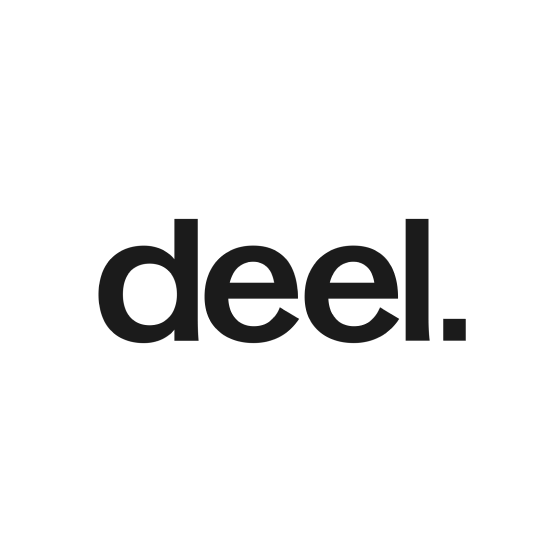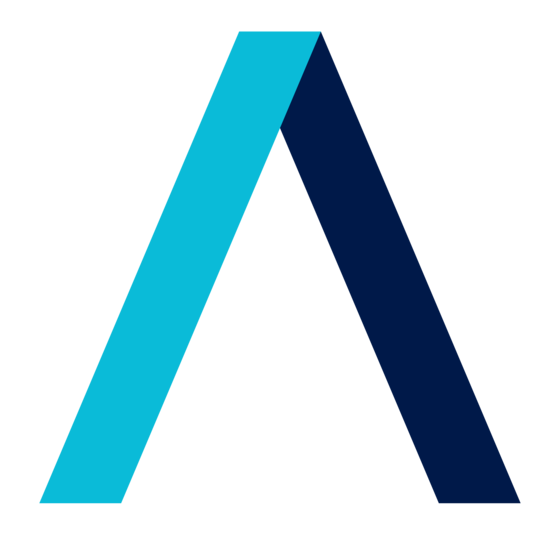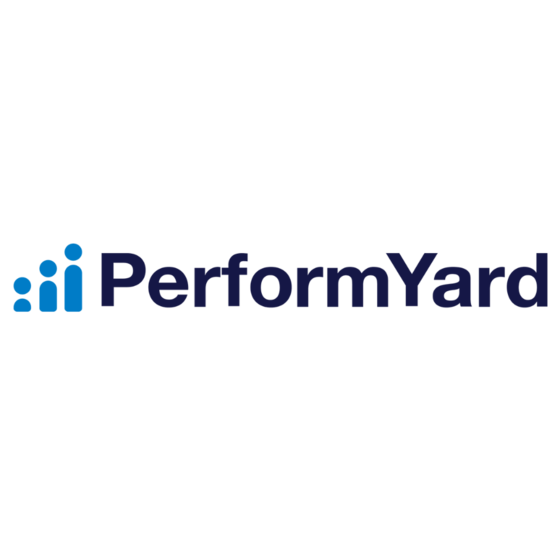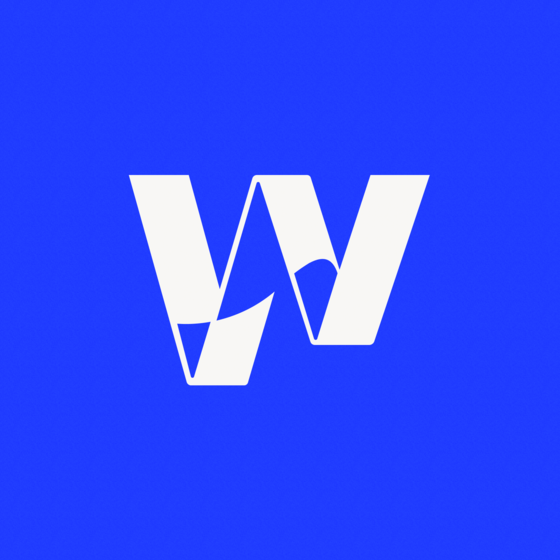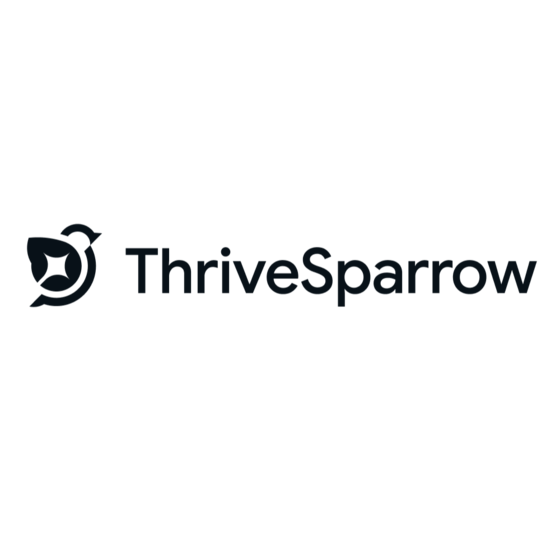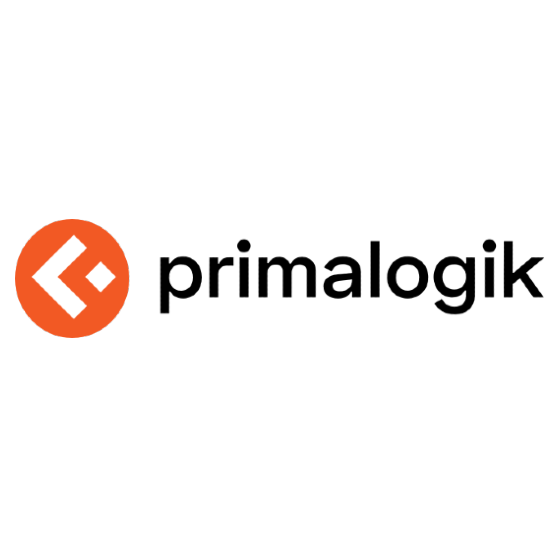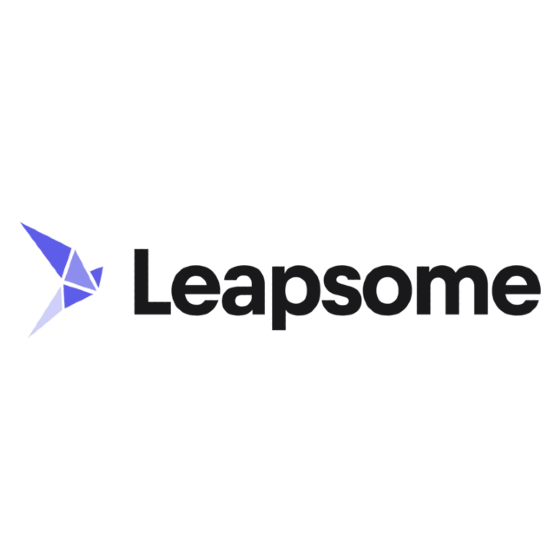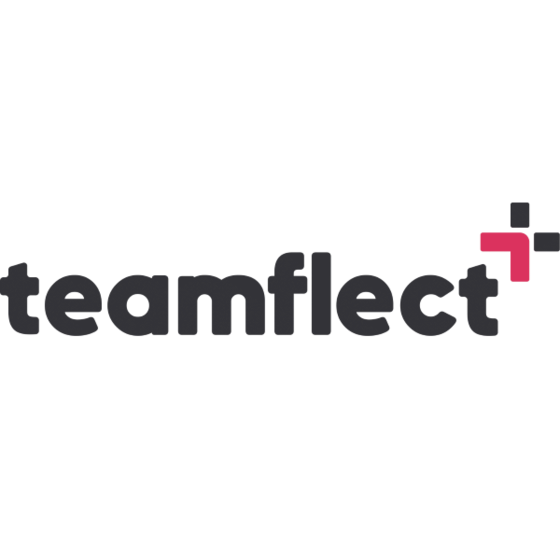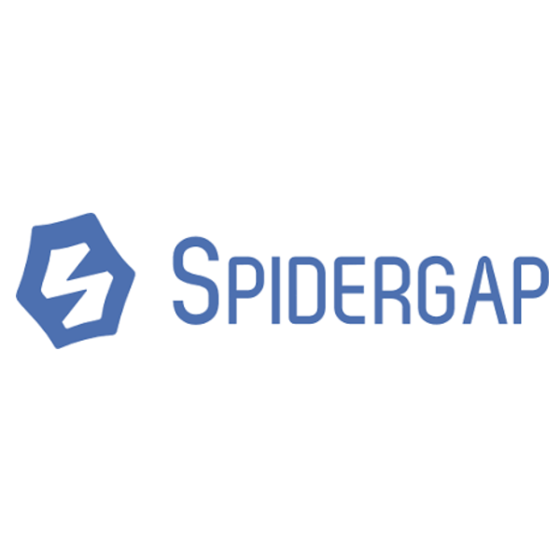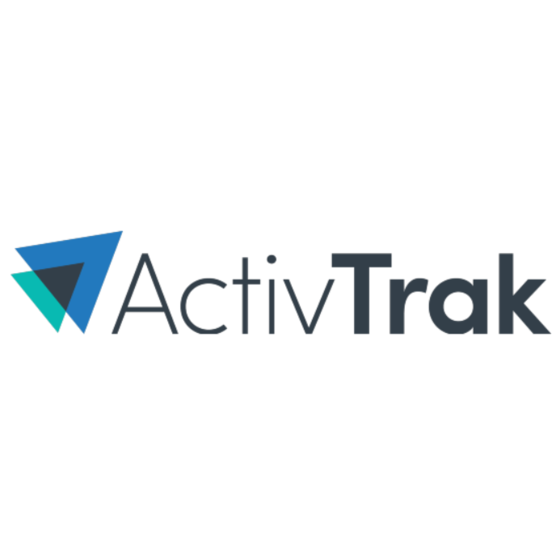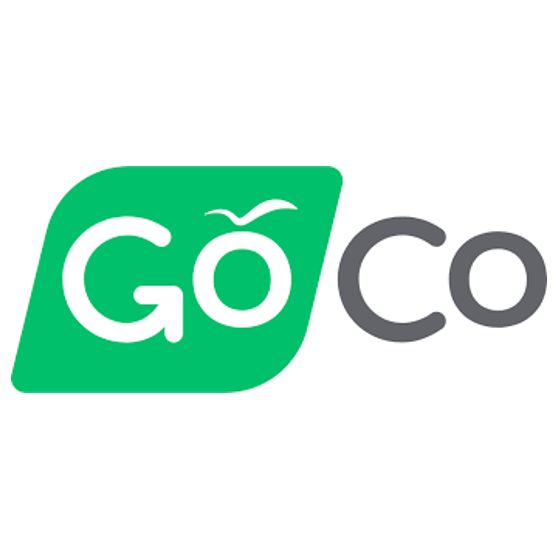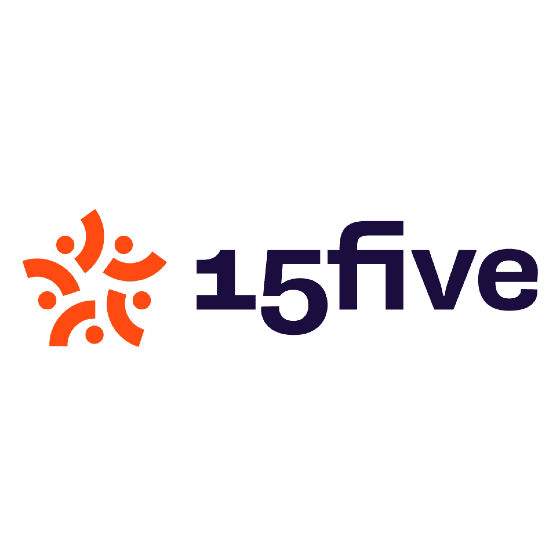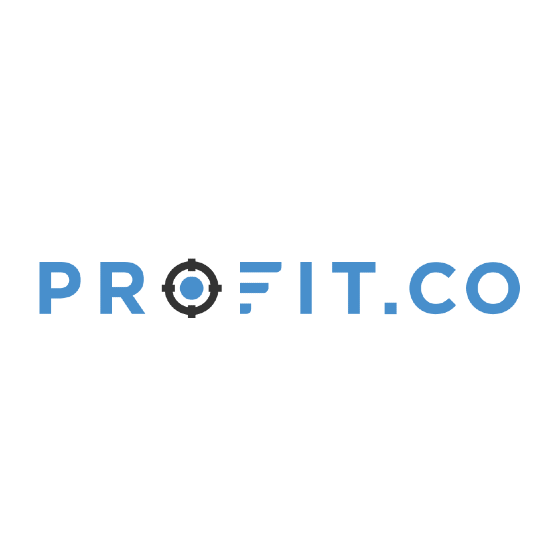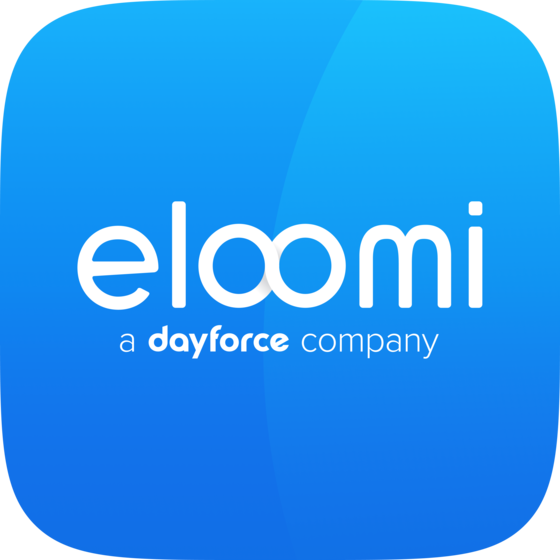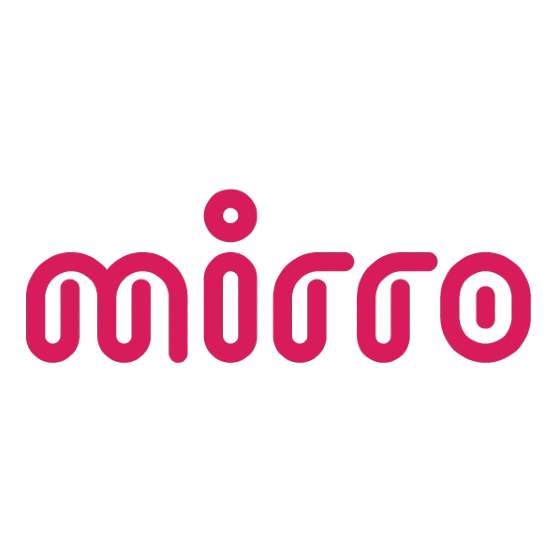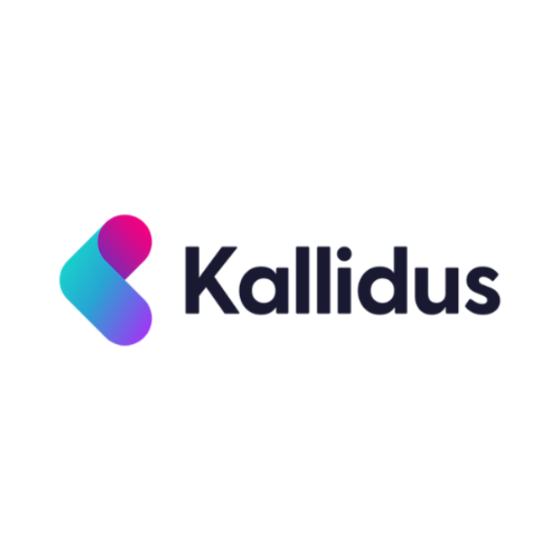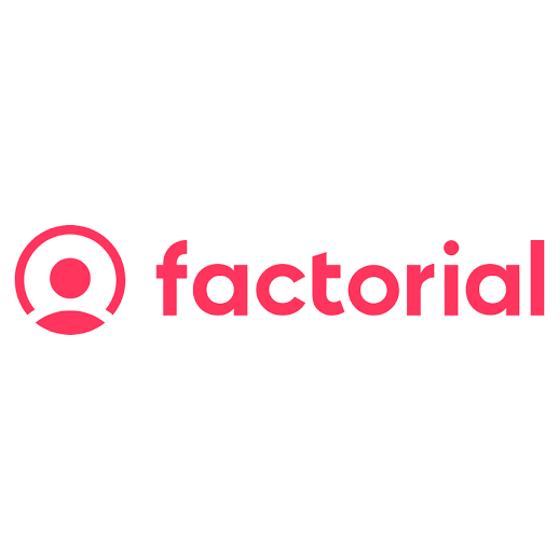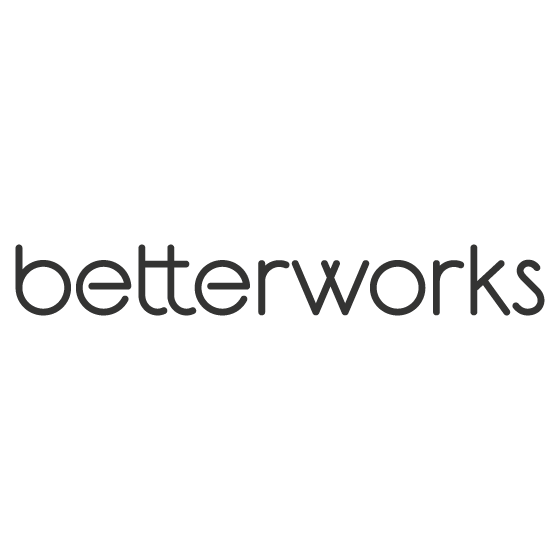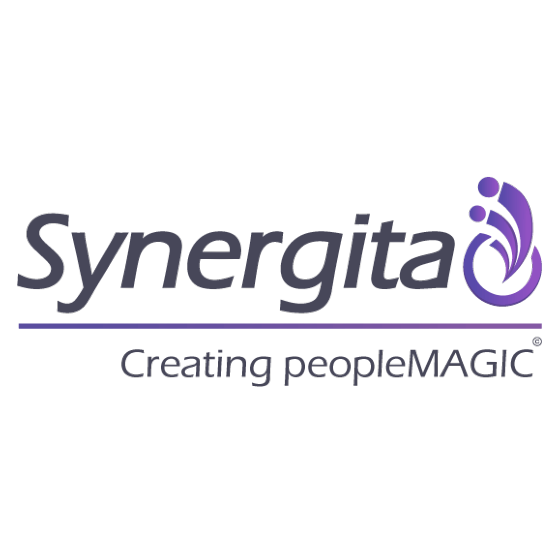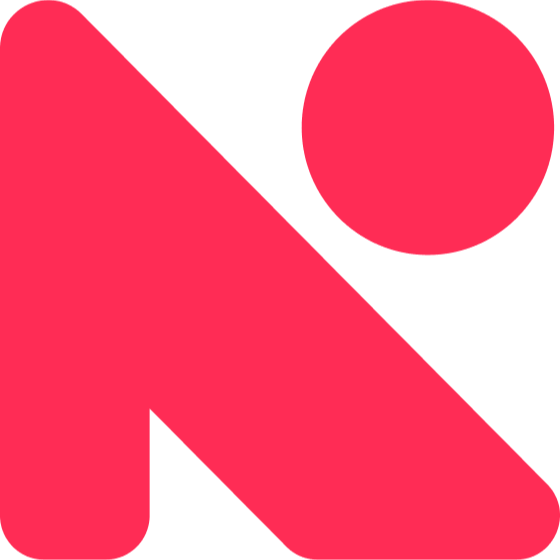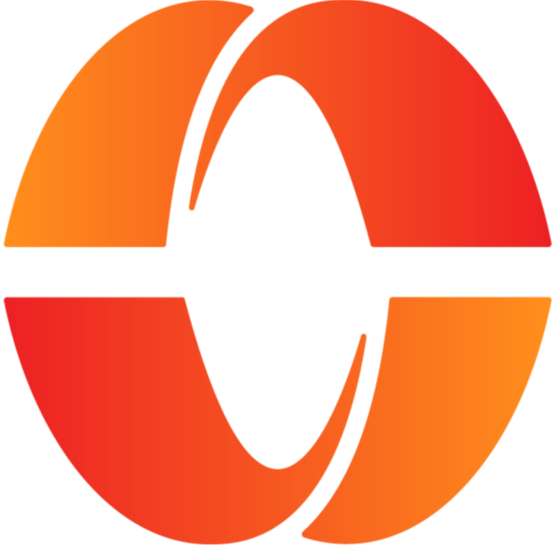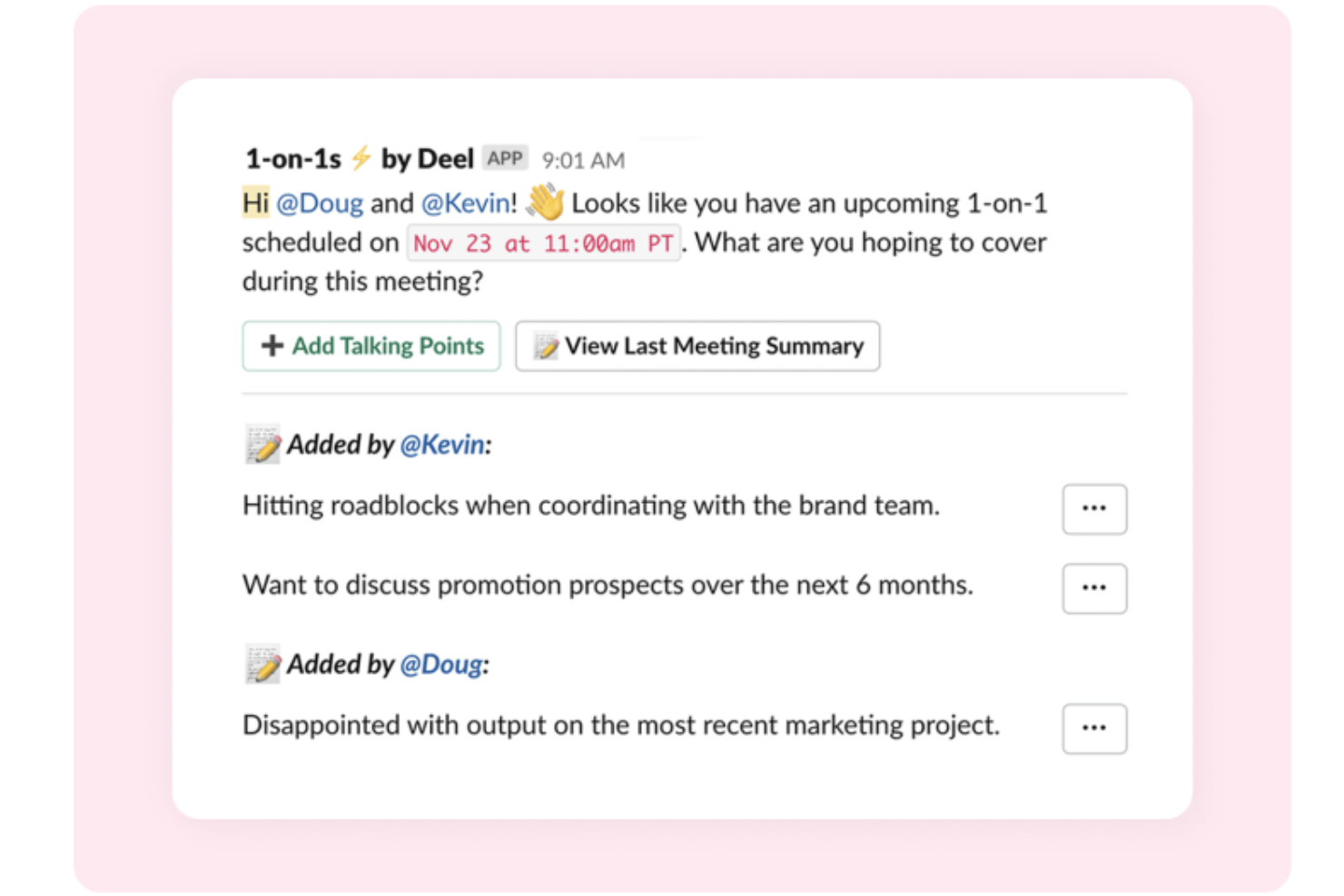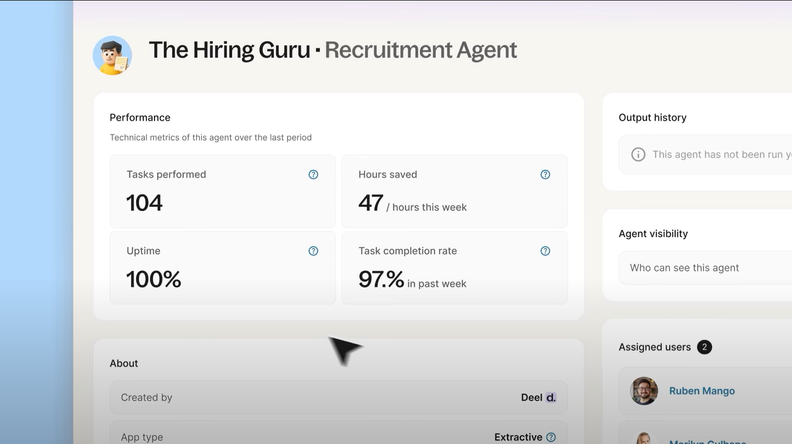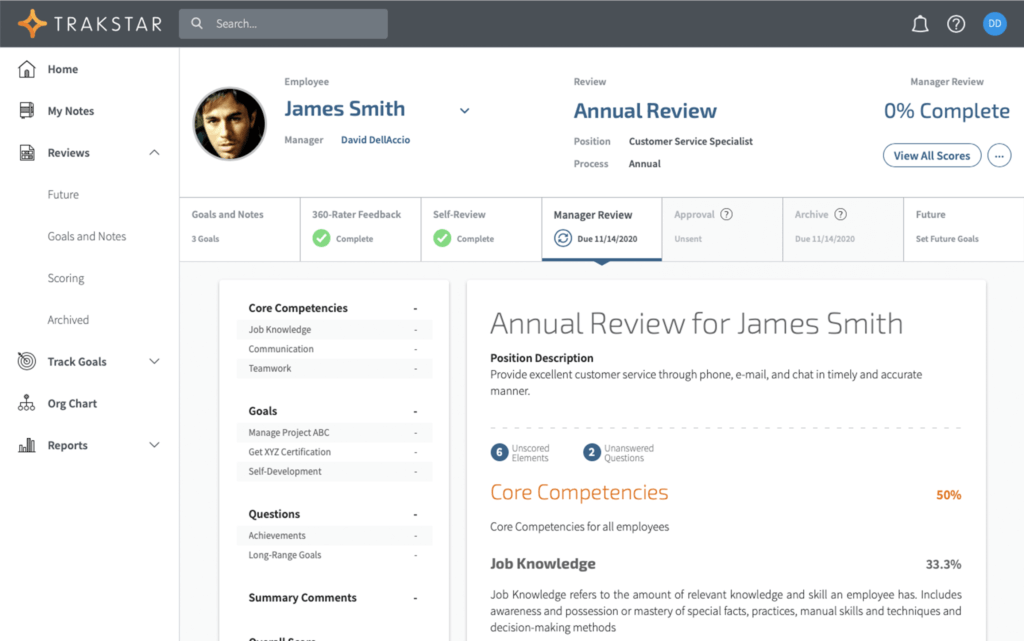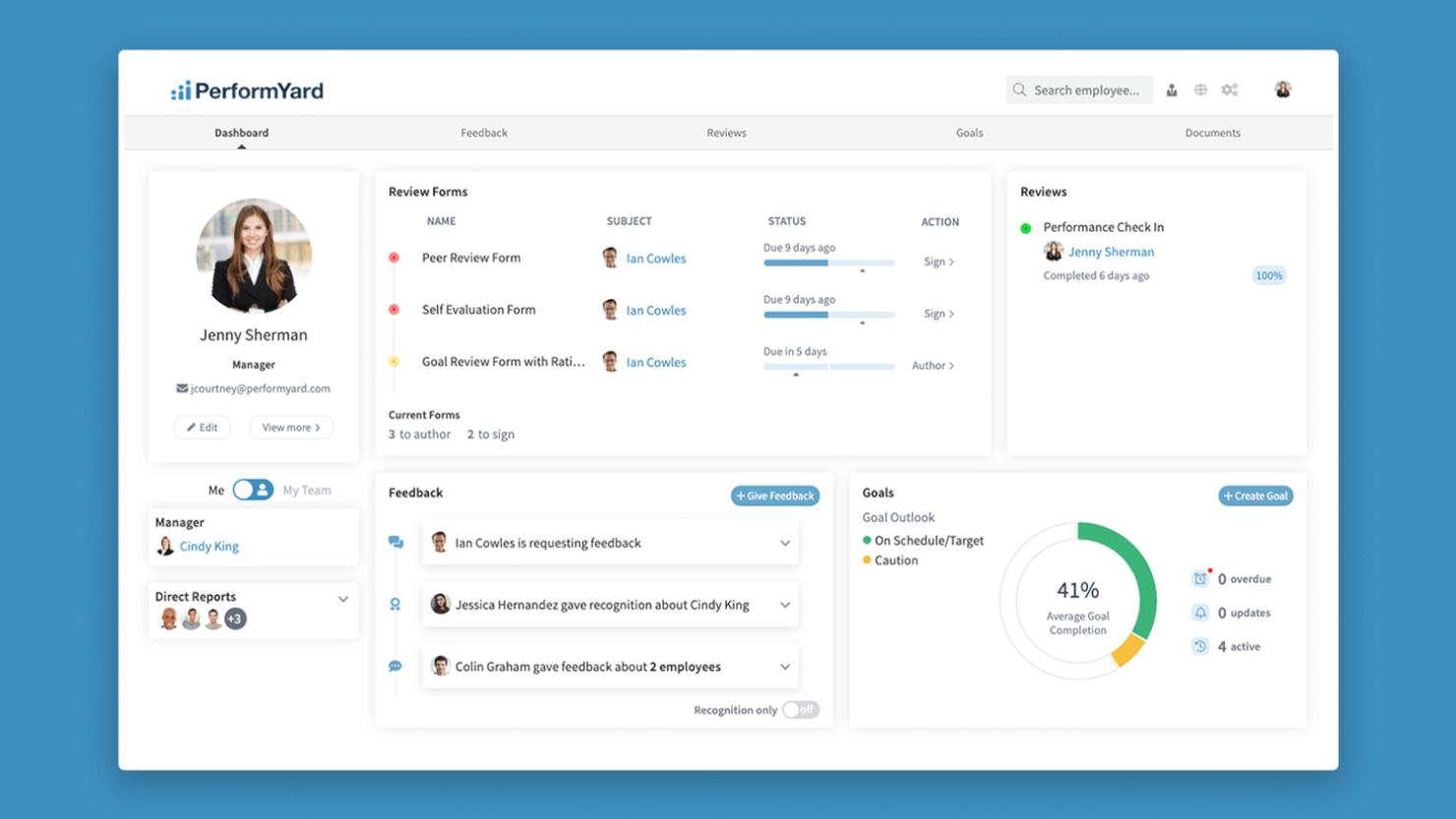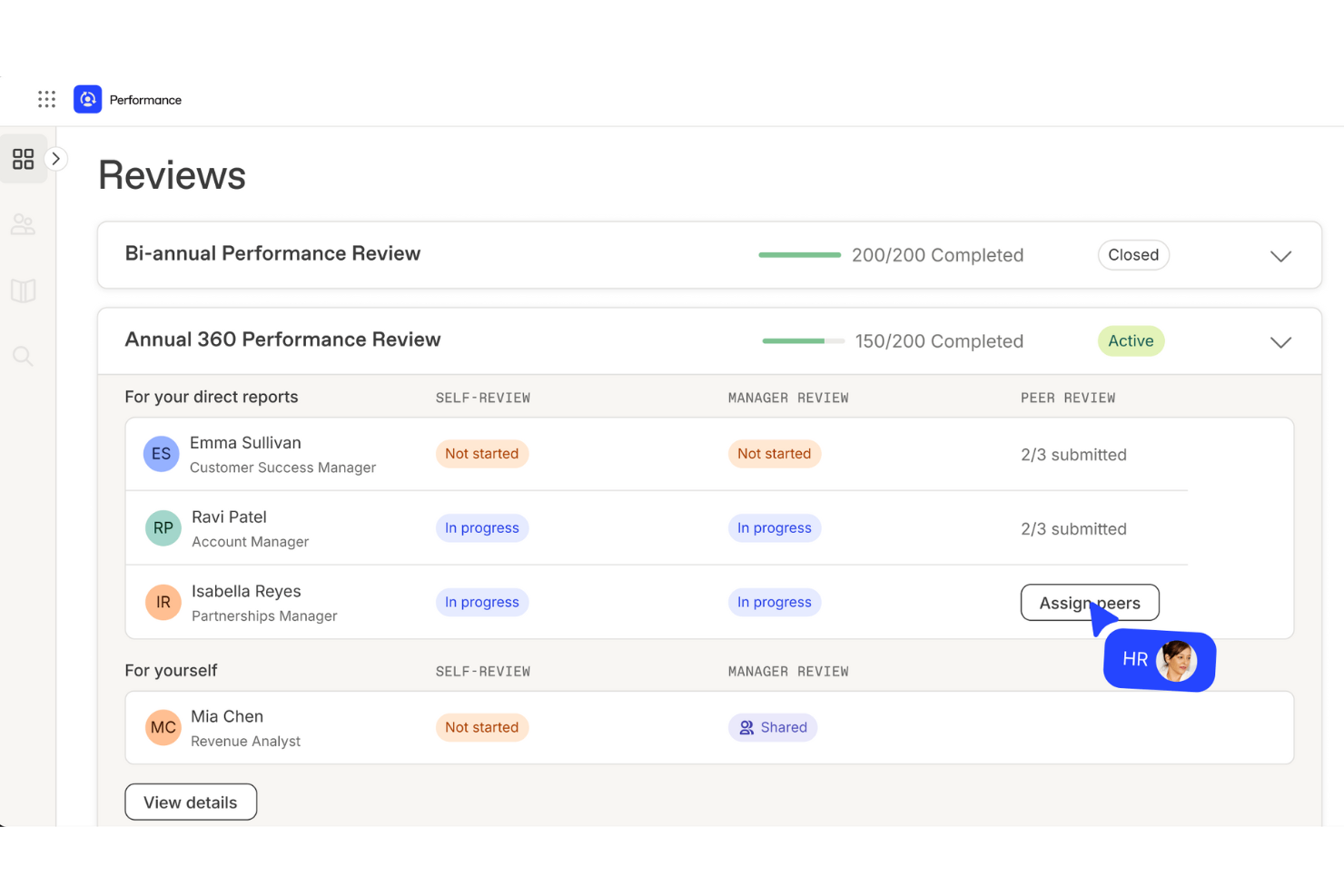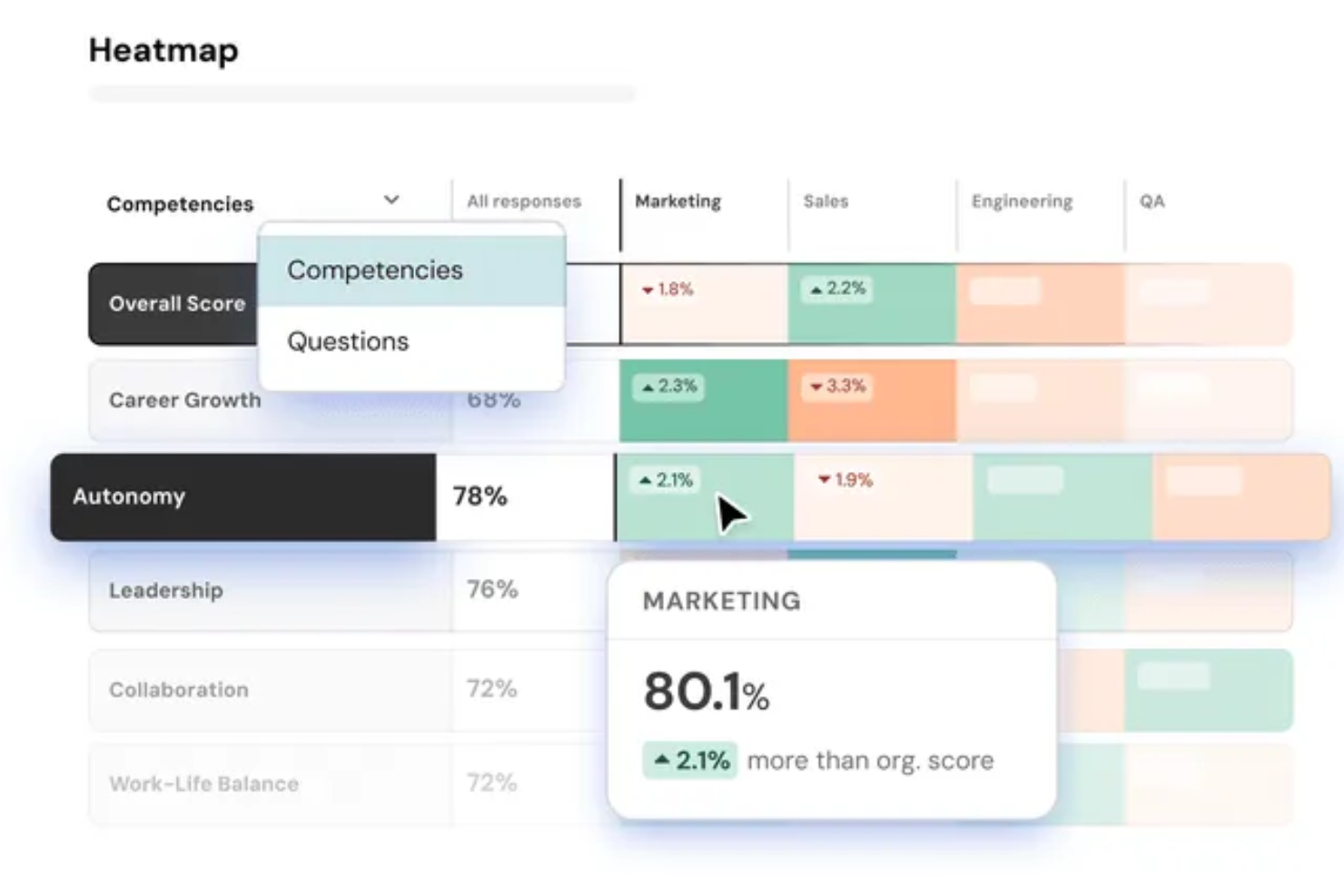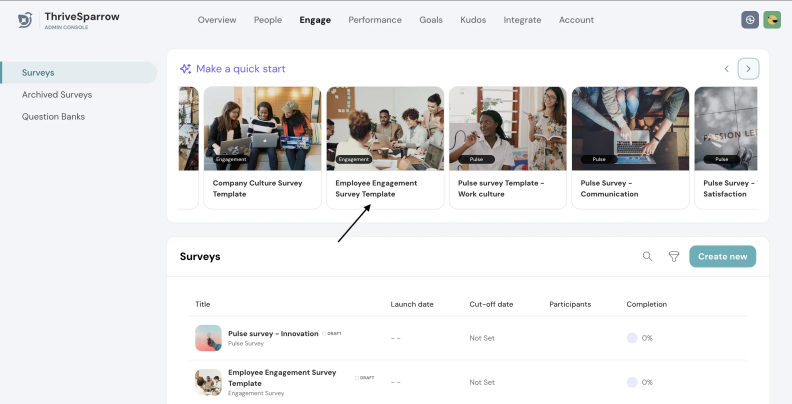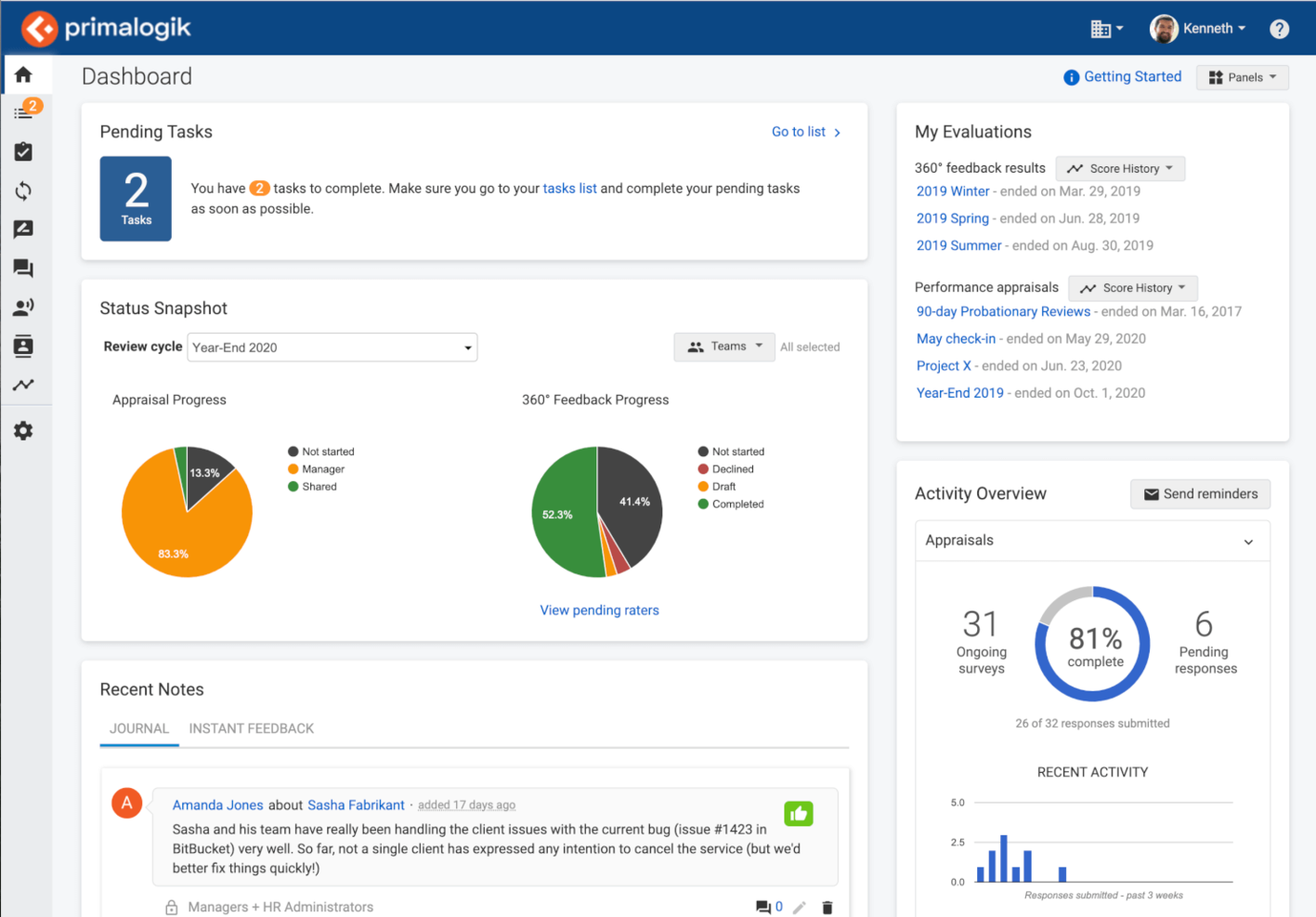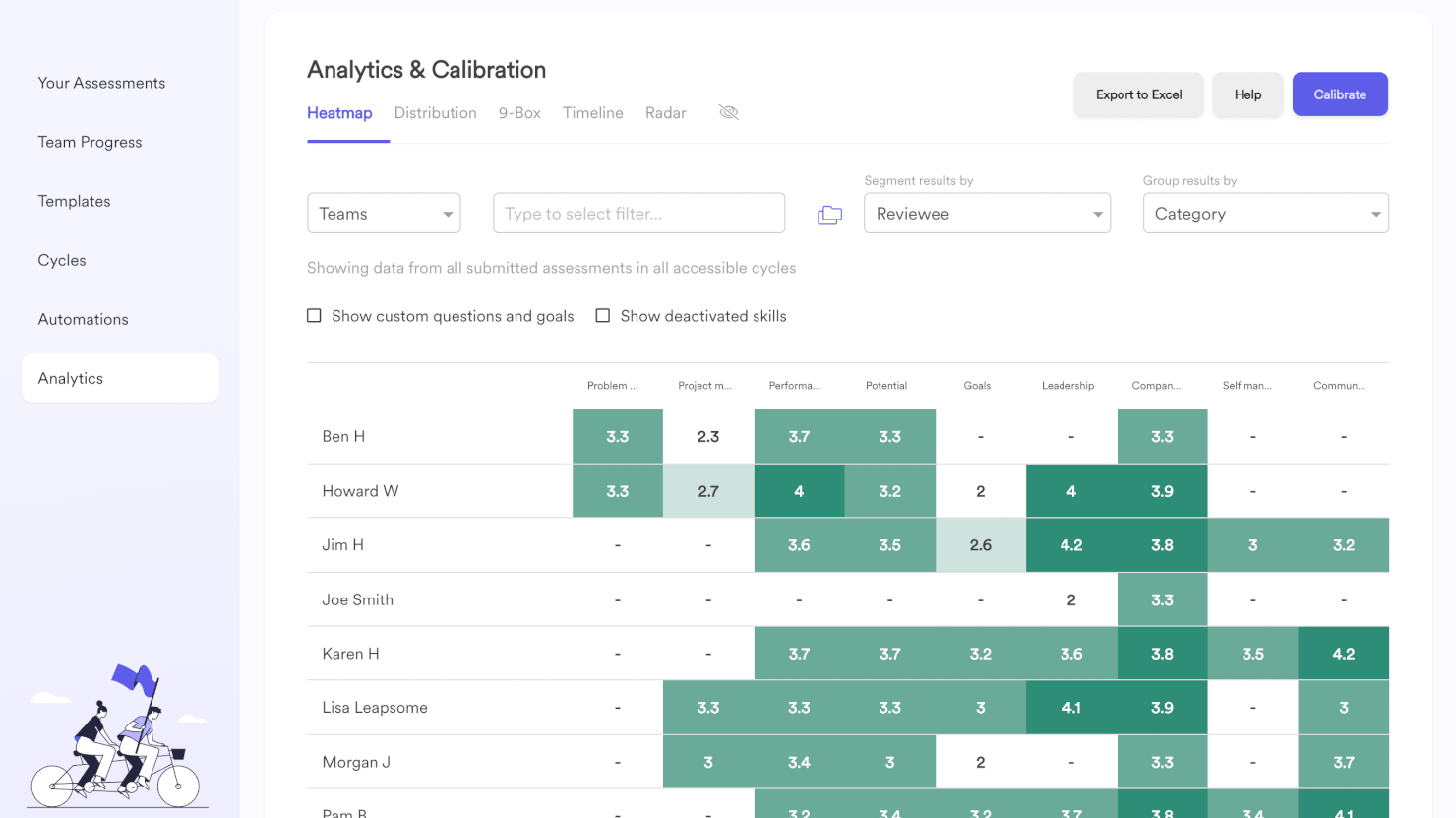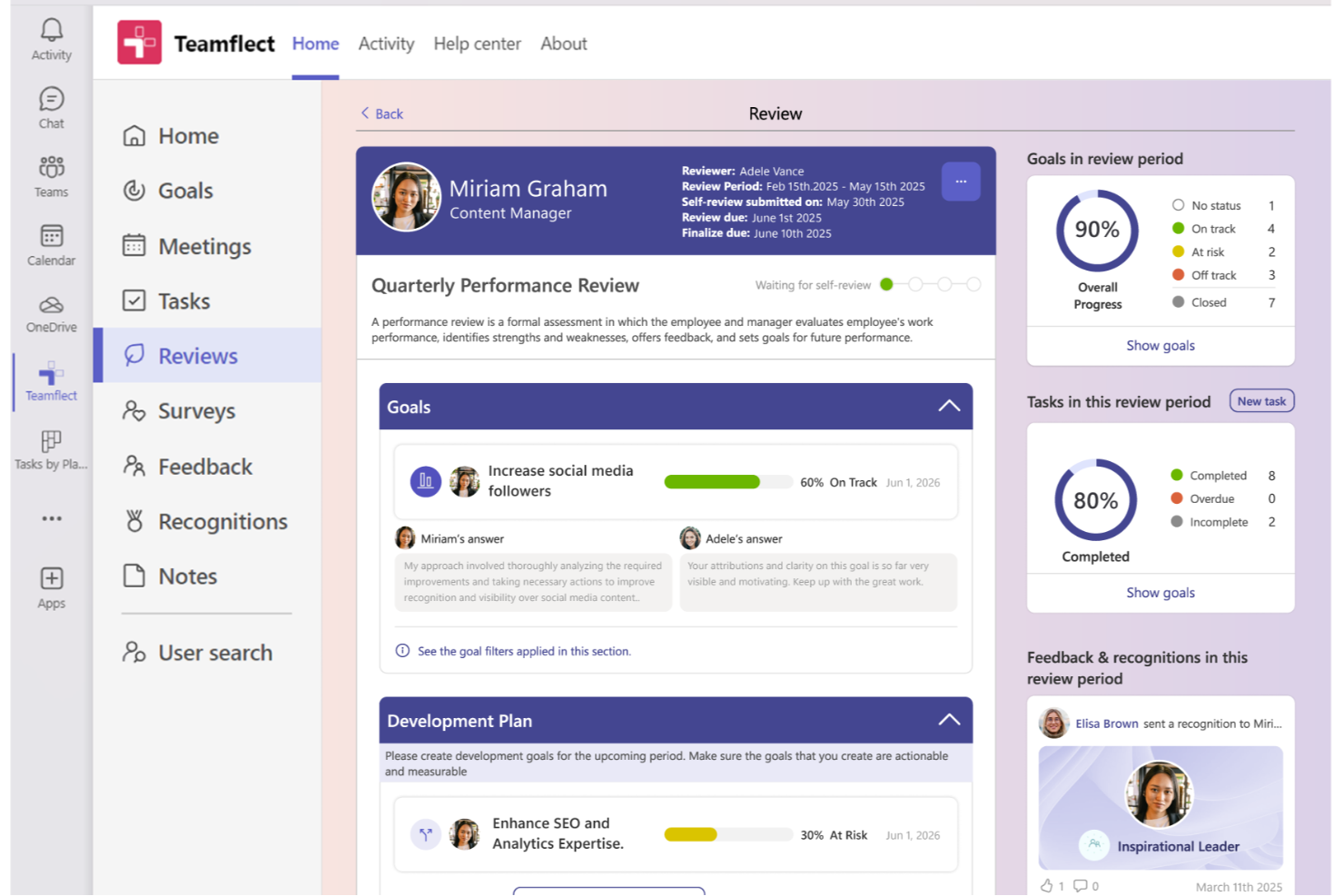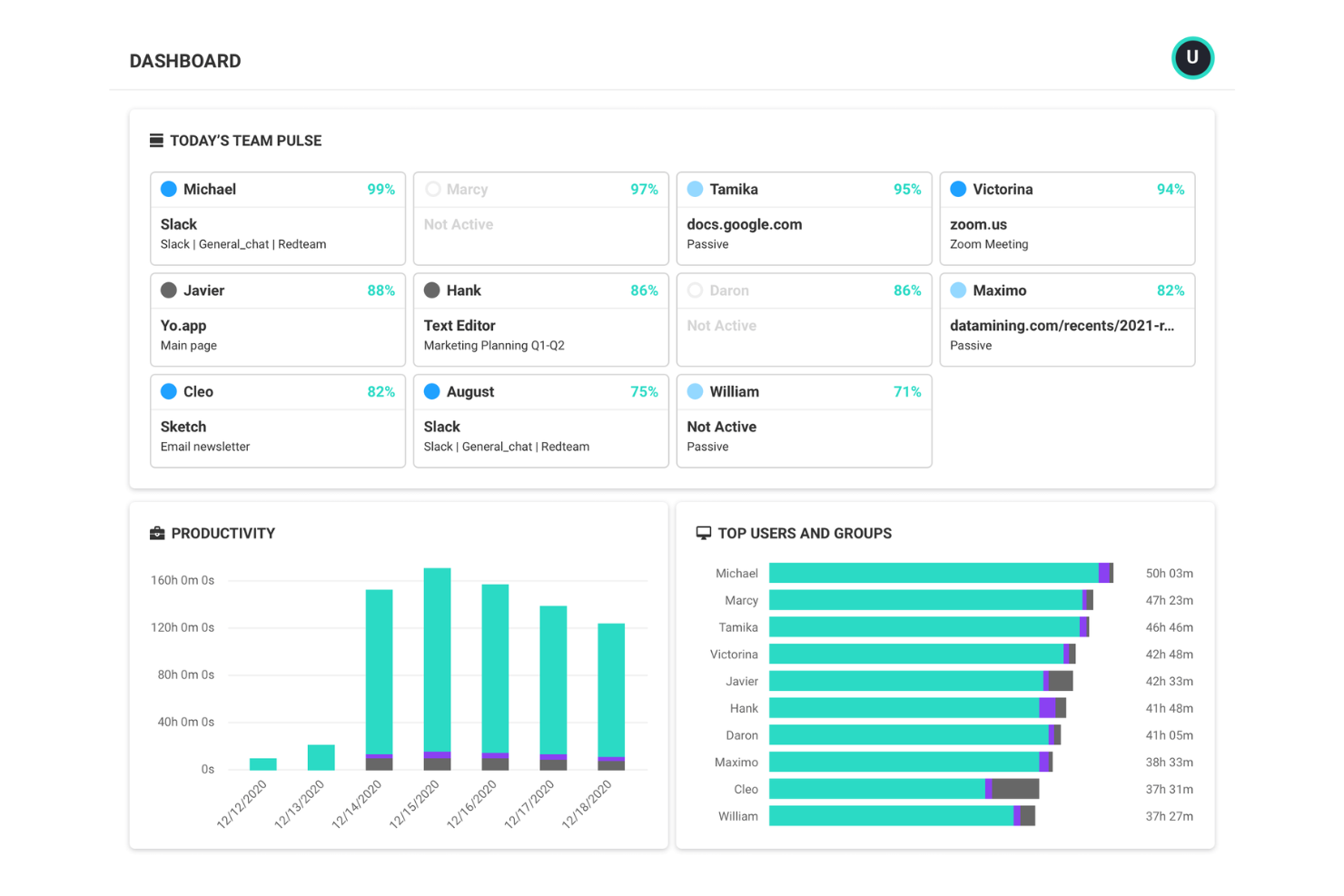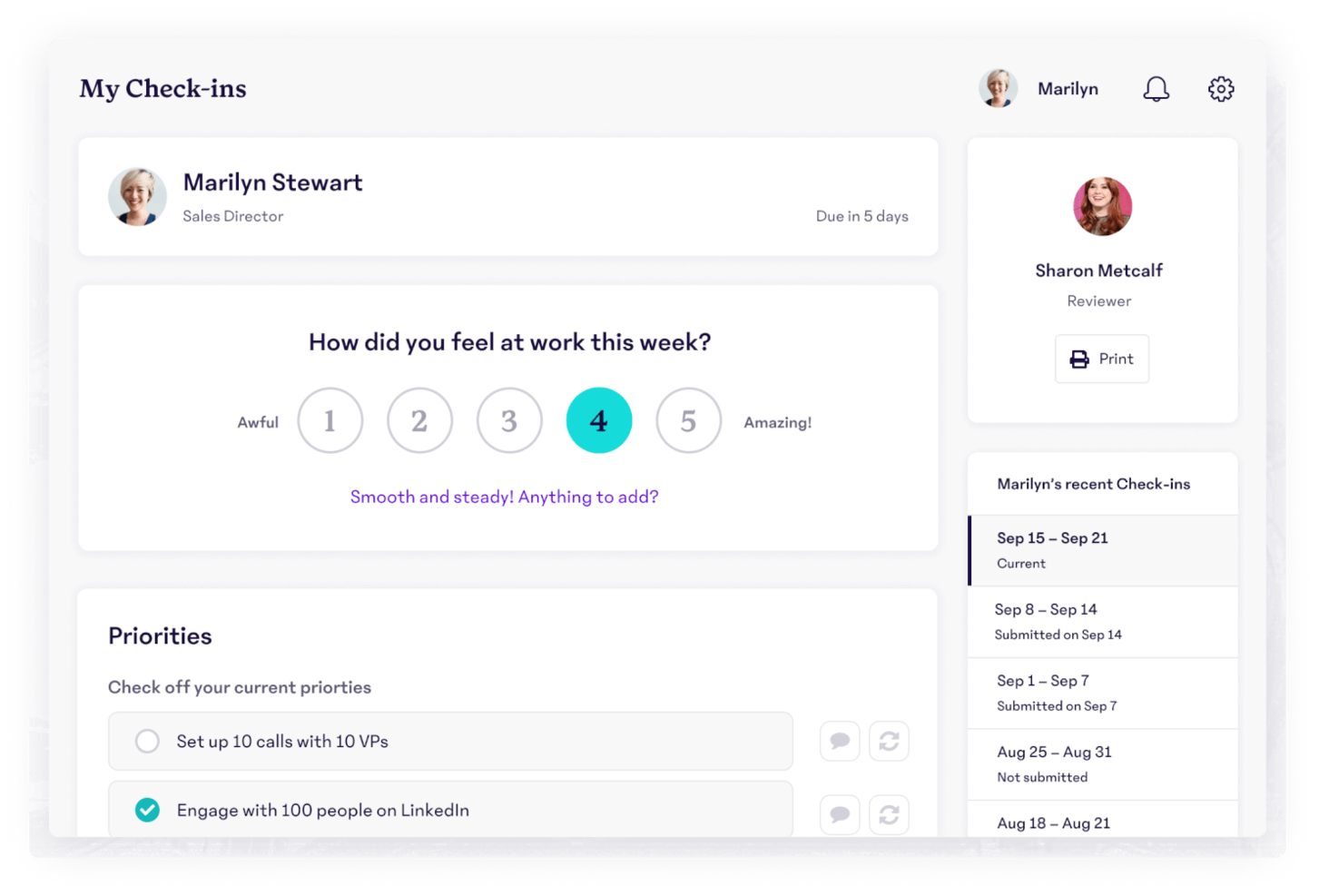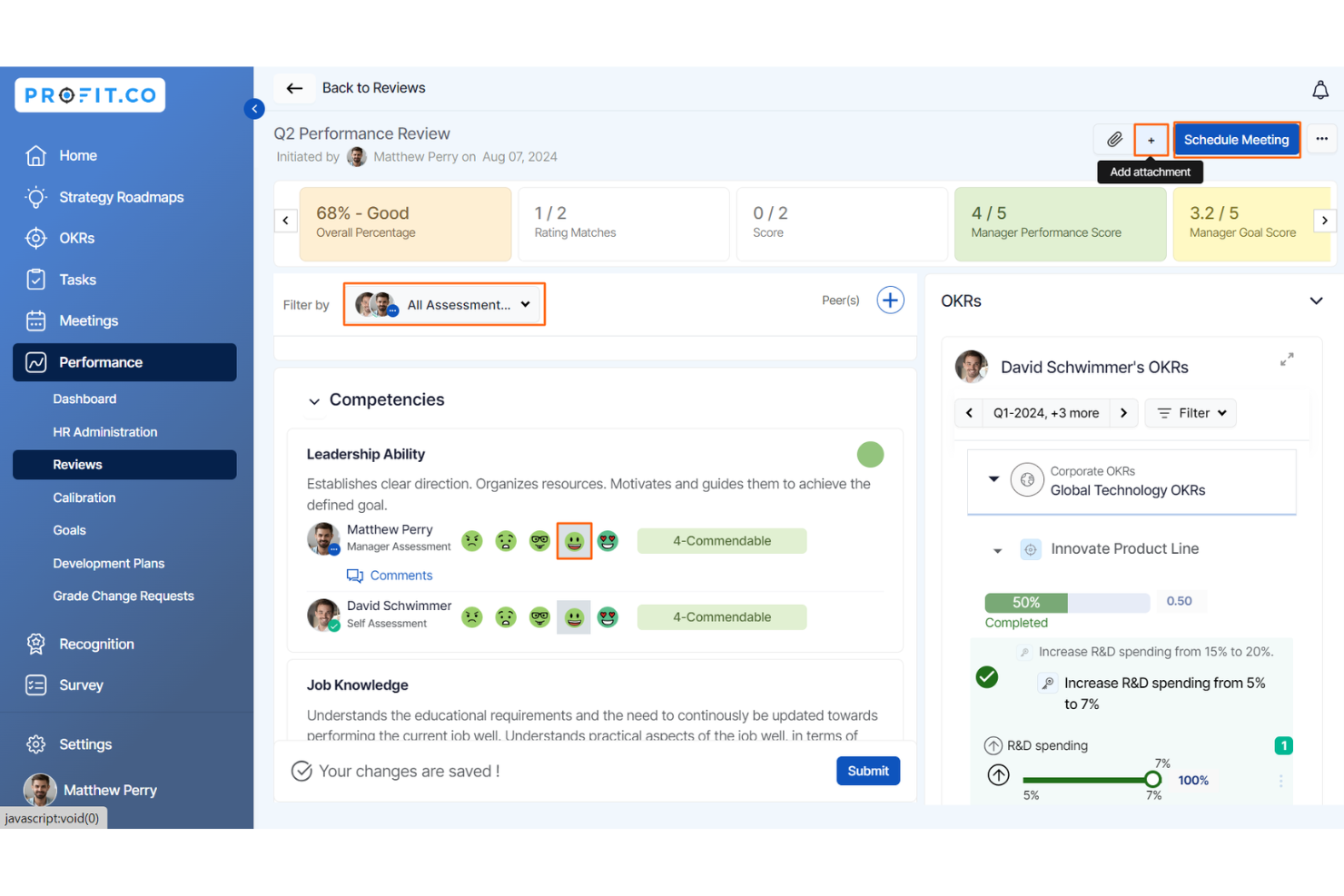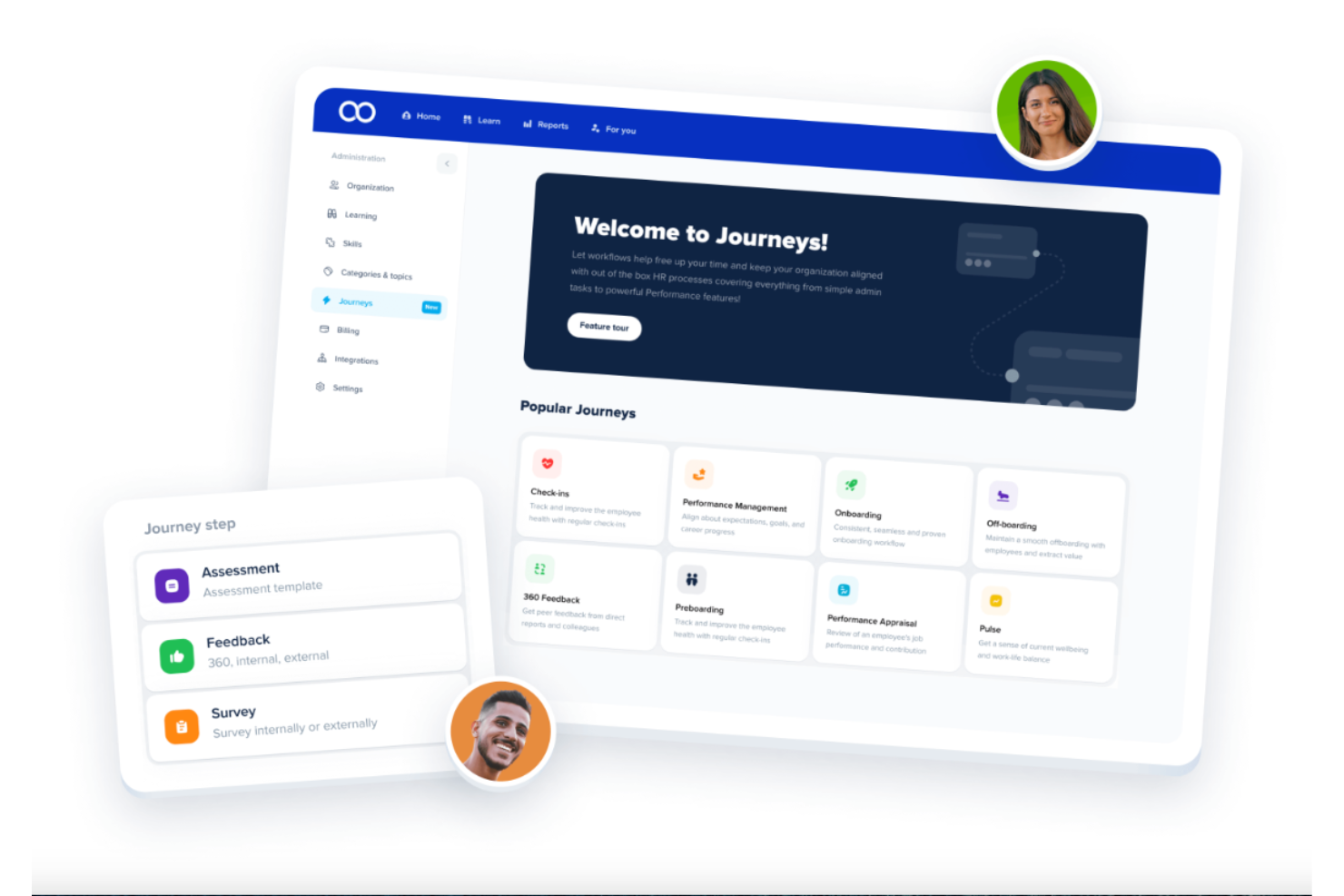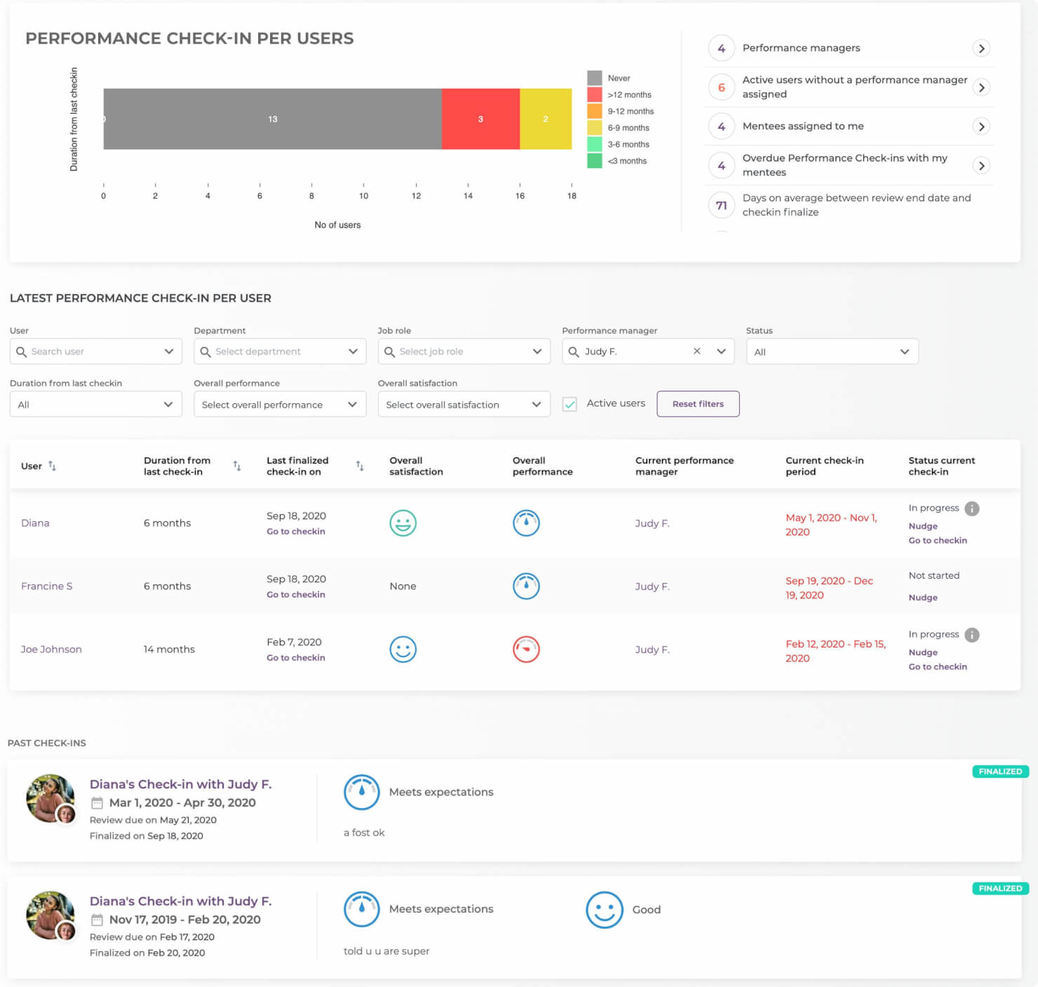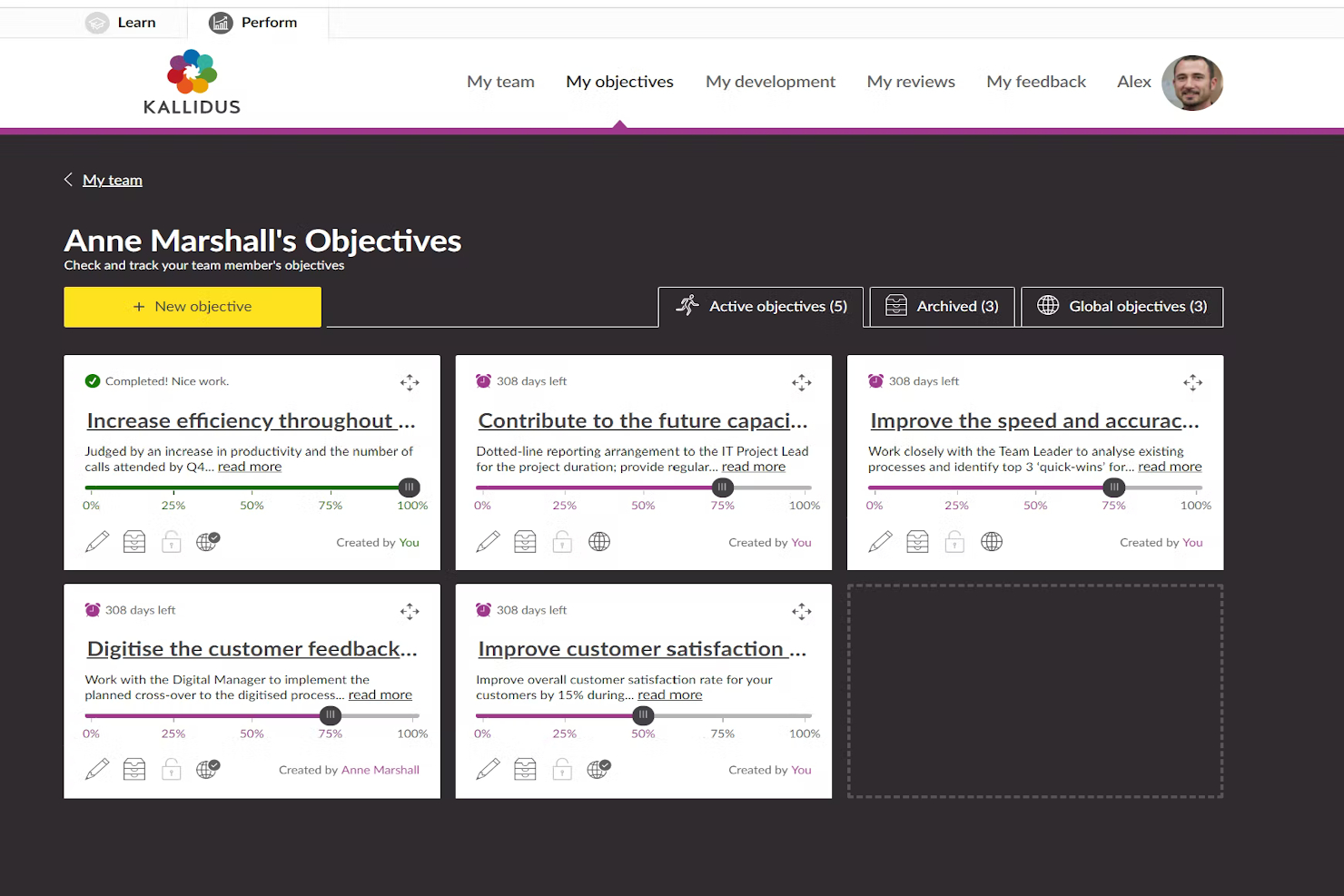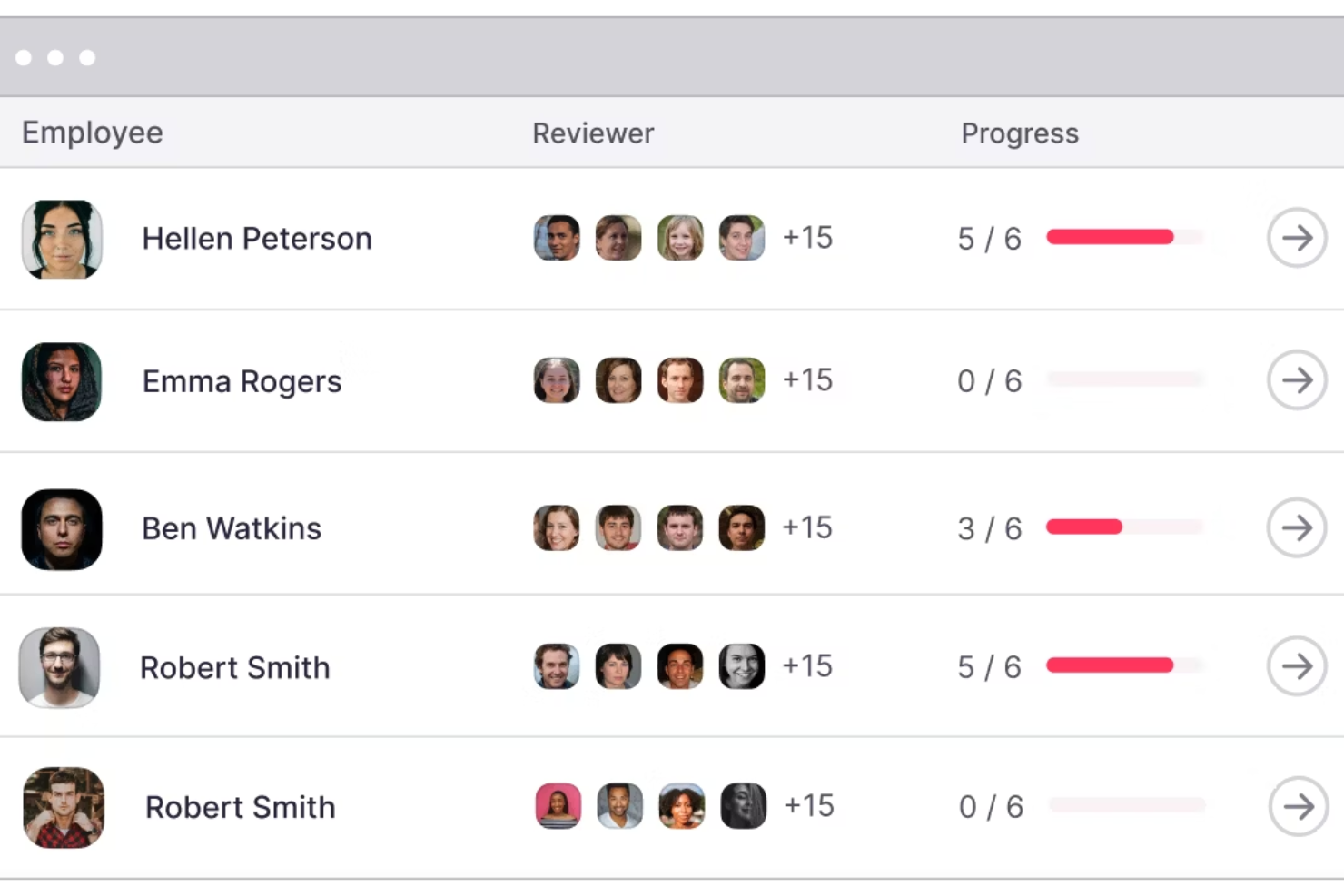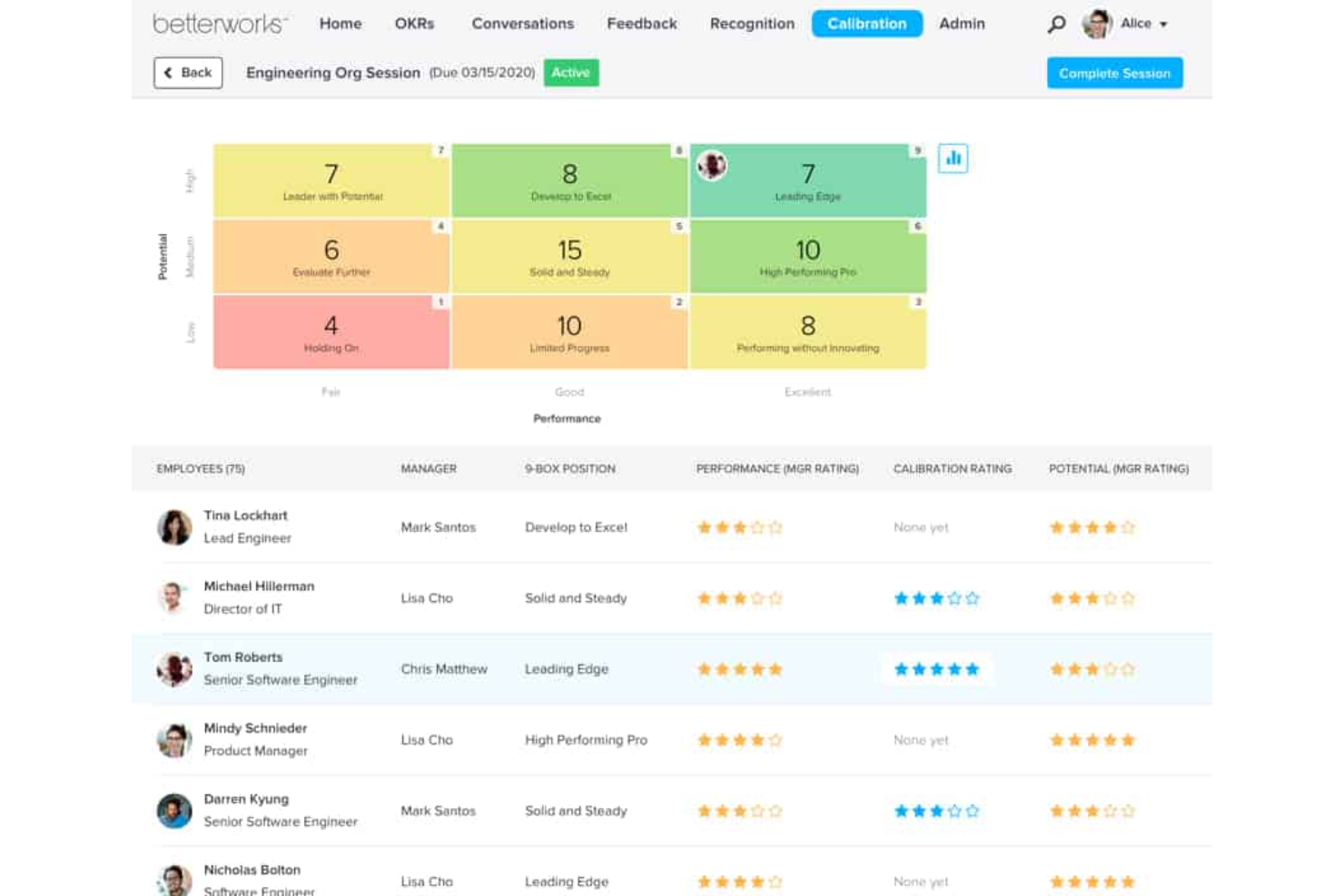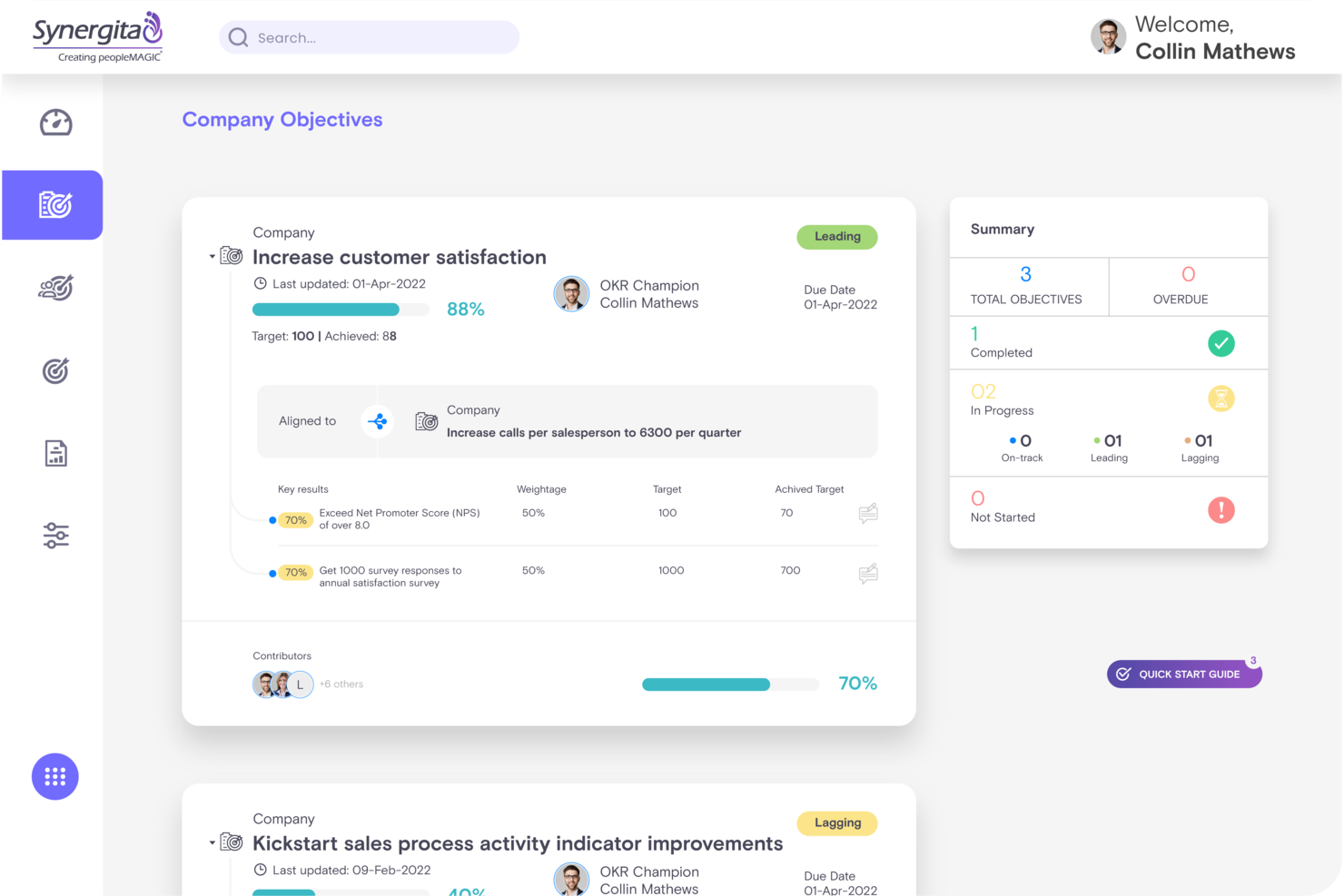20 Best Performance Management Software Shortlist
Here's my pick of the 20 best software from the 40 tools reviewed.
The best performance management software helps HR professionals streamline reviews, set clear goals, and use real-time feedback to boost employee engagement and retention. If you’re stuck chasing feedback in spreadsheets, struggling with inconsistent evaluations, or frustrated by systems that don’t deliver actionable insights, the right tool can transform your process.
With the right platform, you can automate performance cycles, align individual and team goals, collect 360° feedback, and uncover the data you need to make fair, informed decisions—without the admin headaches. This means more time spent developing people, and less time wrangling processes.
As a former HR administrator who’s facilitated over 1,000 performance reviews, I know what makes performance management software genuinely useful—and what gets in the way. In this guide, I’ll share the top-rated tools available today so you can find a solution that fits your people, processes, and culture.
Performance management software isn't just a convenience—it’s a critical tool for improving engagement, boosting retention, and creating a fair, transparent workplace. Now, let's find your perfect fit!
Why Trust Our Software Reviews
We've been testing and reviewing HR software since 2019. As HR professionals ourselves, we know how critical and difficult it is to make the right decision when selecting software.
We invest in deep research to help our audience make better software purchasing decisions. We've tested more than 2,000 tools for different HR use cases and written over 1,000 comprehensive software reviews.
Learn how we stay transparent, and take a look at our software review methodology.
Best Performance Management Software: Comparison Chart
This comparison chart summarizes pricing, trial, and demo details for my top performance management software selections to help you find the best software for your budget and business needs.
| Tool | Best For | Trial Info | Price | ||
|---|---|---|---|---|---|
| 1 | Best for continuous 1:1 performance feedback | Free trial + demo available | From $29/month | Website | |
| 2 | Best for employee lifecycle performance | Free demo available | Pricing upon request | Website | |
| 3 | Best for customized performance review processes | Free demo available | From $5 to $10/user/month | Website | |
| 4 | Best for flexible review cycles | Free trial available | From $5/user/month | Website | |
| 5 | Best for AI-powered performance insights | 14-day free trial | From $2/employee/month | Website | |
| 6 | Best for scalable review processes | 30-day free trial | From $3 to $8/user/month | Website | |
| 7 | Best for development-focused performance | 14-day free trial | From $8/user/month | Website | |
| 8 | Best for performance management in Teams | Free demo available | From $7/user/month | Website | |
| 9 | Best for multi-level performance feedback | Free trial available | Starting at $99/month | Website | |
| 10 | Best for actionable development insights | Free forever plan (up to 1 user) | Pricing upon request | Website | |
| 11 | Best for employee engagement insights | 14-day free trial + free plan available | From $10/user/month | Website | |
| 12 | Best automated performance reviews and feedback | Free demo available | Pricing upon request | Website | |
| 13 | Best for reducing review bias with AI | 14-day free trial | From $4/user/month (billed annually) | Website | |
| 14 | Best for real-time performance tracking | 30-day free trial + free plan available | Pricing upon request | Website | |
| 15 | Best for personalized employee development | Free demo available | Pricing upon request | Website | |
| 16 | Best for peer-to-peer recognition | 14-day free trial | From $7/user/month (billed annually) | Website | |
| 17 | Best for enterprise performance management | Free demo available | Pricing upon request | Website | |
| 18 | Best for real-time performance insights | Free demo available | From $8/user/month | Website | |
| 19 | Best for setting structured check-ins | Free consultation available | Pricing upon request | Website | |
| 20 | Best for performance management tied to OKRs | 7-day free trial | From $5/employee/month (billed annually) | Website |
-

Native Teams
Visit WebsiteThis is an aggregated rating for this tool including ratings from Crozdesk users and ratings from other sites.4.9 -

Rippling
Visit WebsiteThis is an aggregated rating for this tool including ratings from Crozdesk users and ratings from other sites.4.8 -

Paylocity
Visit WebsiteThis is an aggregated rating for this tool including ratings from Crozdesk users and ratings from other sites.4.5
Best Performance Management Software Reviews
Finding the right performance management tool can transform the way you track, evaluate, and support your team’s growth. In this section, I’ve carefully reviewed the top 10 tools that stood out from the rest.
Below, you’ll find an in-depth breakdown of their standout features, strengths, and potential drawbacks, along with insights on why each tool made the cut. Plus, I’ll highlight key integrations and ideal use cases to help you pinpoint the best fit for your organization. Now, let’s dive in!
Deel is a comprehensive HR platform that offers payroll, onboarding and offboarding, workflow and document management, and other helpful tools.
Why I picked Deel: Using Deel, you can ensure employees and contractors are set up for high performance from day one with the system's onboarding workflows.
To manage performance on an ongoing basis, you can use the integrated 1-on-1 meeting tool in the platform. Managers and employees can document meeting notes, and refer back to what they discussed during formal performance evaluations.
Deel Standout Features and Integrations:
Features include a Slack integration that tracks all your 1-on-1s right in Slack, keeping key information centralized for easy access and reference. In addition to 1-on-1 conversations, you can monitor employee engagement levels using the pulse surveys and facilitate important team- and company-wide communications through the software.
In addition to Deel's performance features, their global HR platform is also able to support global businesses with hiring and managing employees and contractors in over 150 countries. To do this, Deel acts as an employer of record (EOR) so you can hire internationally without setting up a local entity.
Integrations include Ashby, BambooHR, Expensify, Greenhouse, Hibob, Netsuite, Okta, OneLogin, Quickbooks, SCIM, Slack, Xero, Workday, and Workable. They also have an Open API that supports additional custom integrations as well.
New Product Updates from Deel
Introducing Deel AI Workforce
Deel has launched the AI Workforce, a set of specialized agents designed to handle repetitive HR, payroll, and compliance tasks with speed and accuracy. These AI agents don’t just assist—they execute tasks from start to finish. For more information, visit Deel's official site.
Mitratech Perform is a streamlined performance management tool without all the fluff. It offers organizations performance appraisal and employee engagement software within an interface that’s easy on the eyes and looks quite like some of today’s social networking sites.
Why I picked Mitratech Perform: Their HR platform offers a comprehensive set of features which are offered via 4 core modules:
- Perform, covering performance management, goals, and employee development,
- Learn, covering for onboarding, training, and skill development,
- Hire, covering for hiring and applicant tracking, and
- Insights (for monitoring data and calculating workforce analytics.
All their modules are interconnected, which helps HR teams modernize multiple core employee lifecycle areas with one software investment.
Mitratech Perform Standout Features and Integrations:
Features include performance reviews with automated reminders, employee engagement surveys, 360-degree/multi-rater feedback, performance benchmarks, employee self-appraisals, and goals across hundreds or thousands of employees. You can also build customized appraisal forms, set SMART goals, and create flexible workflow processes to meet the needs of your organization.
They can accommodate SMBs and enterprises with their volume-discount pricing plan, though you'll need to request an individualized quote via their website.
Integrations include Microsoft Office 365, Google Workspace, ADP Workforce Now, BambooHR, Paylocity, Namely, UKG Pro, Okta, Azure, OneLogin, Docusign, Slack, and many others.
PerformYard's performance management software provides flexible features for HR and a simple employee experience. HR teams will get the tools they need to build out any performance management strategy while employees get a streamlined experience so they can focus on quality feedback and effective performance discussions.
Why I picked PerformYard: With PerformYard you can build and manage performance cycles that fit the way your team works, whether you're running annual reviews, project-based check-ins, or something else entirely. You can set up different workflows for different teams, automate parts of the process, and collect feedback in multiple formats.
If your company has a unique way of doing reviews, this flexibility might suit you. For example, you can customize their software to fit the strategy that's right for your organization: 360s, project based reviews, ratings scales, continuous feedback, and/or cascading goals.
It supports both structured and informal feedback, so you're not locked into a single approach. Goals and feedback can also be customized per department or team.
PerformYard Standout Features and Integrations:
Features include performance journals for ongoing feedback, visual org charts to understand team structures, and a goals dashboard to keep everything aligned.
You can manage review cycles across multiple groups at once. There's also a built-in feedback request tool that lets employees ask for input anytime. Essentially, it provides a simple employee experience that facilitates feedback and quality conversations.
PerformYard also provides dedicated customer success managers for every customer to manage them from onboarding, to employee trainings, to ongoing support.
Integrations include ADP, BambooHR, Gusto, HiBob, Justworks, Rippling, UKG Pro, Paycom, Workday, and Paylocity.
Workleap Performance is a performance management software solution designed to simplify and enhance how you manage team performance throughout the year. It offers a customizable framework that aligns with your company's unique culture and goals, facilitating meaningful feedback and consistent review processes.
Why I picked Workleap Performance: Their software stands out for its flexible review cycle builder, allowing you to create and manage custom performance review cycles at your own pace. This feature enables you to tailor the review process to your organization's specific needs, ensuring that evaluations are relevant and timely.
Another notable feature is the ability to gather 360-degree feedback through self, peer, and manager reviews. This comprehensive approach provides a well-rounded view of employee performance, fostering a culture of continuous improvement and open communication within your team.
Workleap Performance Standout Features and Integrations:
Features include flexible performance review cycles, 360-degree feedback tools, and customizable evaluation criteria, allowing you to tailor performance reviews to your organization's focus areas.
The configurable audience feature lets you customize audiences within review cycles to ask the right questions to the right people. Additionally, automated performance review notifications streamline the review cycle, reducing delays and improving communication.
Integrations include Microsoft Teams, Slack, BambooHR, ADP Workforce Now, Factorial, Gusto, HiBob, Paycor, Paylocity, Personio, Sage HR, and Workday.
ThriveSparrow is an AI-powered employee success platform that focuses on improving workplace performance and engagement. It provides performance review tools, engagement insights, and goal alignment to foster high-performing teams and a positive work culture.
Why I picked ThriveSparrow: The platform offers 360-degree performance reviews, which gather comprehensive feedback from peers, managers, and the employees themselves, ensuring a well-rounded assessment of performance. This is further supported by tools for employee recognition, engagement surveys, and goal-setting using objectives and key results (OKRs).
The integration of AI insights and multilingual surveys also allows ThriveSparrow to efficiently analyze performance data, equipping organizations with the necessary tools to monitor and improve employee outcomes.
ThriveSparrow Standout Features and Integrations:
Features include full-cycle 360 degree reviews, individual performance reports for employees and team-based performance analytics for leaders, performance heatmaps, competency scoring, detailed performance analytics, and trend visualization tools to uncover strengths and potential skill gaps.
Managers can also view the performance information for their entire team in one place, making it easier to uncover future leaders within large teams.
Integrations are available with 60+ popular systems, including Slack, Microsoft Teams, Google Workspace, Bob, UKG, Gusto, Workday, BambooHR, Dayforce, ChartHop, Justworks, Employment Hero, Kallidus, JumpCloud, and many others.
New Product Updates from ThriveSparrow
New Survey-Builder
ThriveSparrow's updated survey-builder allows HR teams to create and distribute engagement surveys quickly, with guided question selection, branding, and distribution options. More details at ThriveSparrow Blog.
Primalogik’s scalable employee performance management software includes a wide range of features that foster employee engagement and empower managers and their employees to reach their full potential.
Why I picked Primalogik: Their 360-degree feedback module makes it easy to solicit feedback from multiple sources. Admin users can select their own rating scales for their evaluation questionnaires, and determine the level of anonymity that will be applied to the feedback.
Once employee feedback is in the system, Primalogik has several tools to support deep analysis of the data. For example, their system allows managers to compare employees’ self-ratings side-by-side against other respondent's feedback. This helps identify any blind spots between where an employee believes they are, and what their co-workers have suggested.
As well, their Comparison Mode allows admin users to benchmark each employee appraisal and compare them across their workforce — a useful way of identifying their overall top performers or spotting potential company-wide skill gaps.
Primalogik Standout Features and Integrations:
Features include performance review assessments, 360-degree feedback, engagement surveys, employee goals and OKRs (objectives and key results), and instant feedback including 1:1 check-ins. Collectively, these features help Primalogik users gain insight into employees' individual performance and uncover areas to make small improvements.
Advanced features in this module include the option for managers and admin staff to launch feedback requests about their employees and solicit responses from specific co-workers, automatic reminders to provide feedback by a certain date, and real-time feedback tracking.
Integrations include ADP, BambooHR, Google Workspace, Microsoft Azure, and Okta. Their performance management software is also available in Spanish or French.
Leapsome is an all-in-one performance management and employee engagement tool that helps organizations enhance their management processes.
Chosen by companies like Spotify, Northvolt, and Babbel, Leapsome enables a continuous cycle of performance management and personalized learning that powers the growth of your people and business.
Why I picked Leapsome: I appreciate how their OKRs & goals module helps you manage objectives at the company, team, or individual level. Thanks to its ease of use and intuitive visuals, the tool helps you connect the big picture to the tiny details using flexible metrics, easy visualization of dependencies and goal progress, and goal trees.
Leapsome Standout Features and Integrations:
Features include anonymous/non-anonymous feedback, expert templates, skill frameworks, development paths, automations, and powerful analytics. Their 360-reviews are fully customizable and easy to set up and include customizable questions, frequency, participants; segmentation by department, performance; and automated analytics.
Their employee engagement surveys can identify engagement drivers and measure your employees‘ satisfaction over time. Whether through custom questions or Leapsome's expert templates, the tool helps you turn company sentiment into action.
Their performance platform also offers meeting management to conduct effective 1-on-1s or team meetings with any employee in your organization, driven by a well-structured agenda and talking points.
Integrations include Personio, BambooHR, HiBob, Workday, Rippling, PayFit, ADP, Active Directory, SFTP Integrations, Slack, Jira, Microsoft Teams, calendar apps, and Single Sign-On (SSO).
Teamflect’s performance management software works directly within Microsoft Teams, helping managers and employees align on goals, share feedback, and track performance without switching platforms. It combines reviews, OKRs, surveys, and recognition into one integrated workspace designed for collaboration.
Why I picked Teamflect: I chose Teamflect for its automated performance reviews and strong integration with Microsoft Teams. The tool offers customizable templates and automated check-ins, making evaluations less time-consuming while keeping them consistent across the organization.
I also liked its real-time feedback system, which helps employees and managers stay aligned on goals and progress. Another highlight is its built-in OKR tracking, enabling teams to set cascading objectives that connect individual contributions with company-wide priorities.
If your organization relies heavily on Microsoft Teams, Teamflect may be a natural fit since it centralizes performance management directly inside your existing workflows. Features like structured 1-on-1 meeting agendas and engagement surveys further enhance visibility into team morale and productivity.
Teamflect Standout Features and Integrations
Features include individual development plans to guide career growth, succession planning tools to identify future leaders, and analytics dashboards to track performance metrics across teams.
You can also manage tasks and projects directly within Teams, reducing the need to jump between platforms.
Integrations include Microsoft Teams, Microsoft Outlook, Microsoft 365, Microsoft Power Automate, Microsoft To Do, Entra ID (formerly Azure Active Directory), Microsoft Power BI and 225 different HRIS platforms.
Workable HR is an all-in-one HR software platform that focuses on improving hiring, onboarding, and employee management, through AI-driven automation.
Why I picked Workable HR: When it comes to performance management, Workable offers a range of features to keep track of progress, including customizable performance review forms and review cycles. This allows you to tailor performance reviews to align with your company goals and employee development, ensuring that you can evaluate your team's progress in a way that makes sense for your business.
Workable HR Standout Features and Integrations:
Features include performance review templates that are configurable for different roles and departments, customizable review cycles, and detailed performance analytics. Once you've customized the templates to fit your specific needs you can save them and re-use them for each review cycle.
Additionally, the multi-level feedback system facilitates comprehensive evaluations by incorporating self-reviews, manager reviews, and 360-degree feedback from peers.
Integrations include Indeed, BambooHR, HiBob, Checkr, Certn, ADP, Deel, LinkedIn, G-Suite, Microsoft 365, Spark Hire, and Slack.
Spidergap is a performance management tool built around its 360-degree feedback software, which supports employee development by helping individuals identify and act on growth areas. It’s used by teams of all sizes to run feedback cycles that lead to meaningful conversations rather than dense data dumps.
Why I picked Spidergap: I picked Spidergap because it prioritizes clarity in its reports—something that often gets lost in traditional performance review tools. Each feedback report is structured to surface actionable development insights instead of overloading recipients with graphs or vague scores.
The templates are flexible, too, which means you can adjust the questions and workflow based on your team’s structure or role levels.
For organizations that want to measure the impact of their efforts, the built-in ROI survey can help track whether feedback is actually moving the needle.
Spidergap Standout Features and Integrations:
Features include guided setup tools that walk you through your first project, automatic email reminders to keep participants on track, and admin dashboards for monitoring feedback progress across teams. You can also preview the participant experience before launch to catch any issues early and ensure the process runs smoothly.
Integrations include Google, Excel, and Intercom.
ActivTrak is a workforce analytics and productivity management platform that helps organizations understand how teams spend their time. Designed for performance-driven workplaces, it delivers real-time insights into employee engagement, workload balance, and technology usage so you can make informed decisions that boost productivity and efficiency.
Why I picked ActivTrak: I picked ActivTrak because it gives you a clear, data-backed view of how your teams are performing throughout the day. Its real-time dashboards and trend analytics make it easy to identify coaching opportunities, rebalance workloads, and prevent burnout before it happens. I also like that the platform emphasizes privacy and transparency, giving managers insight without resorting to intrusive monitoring.
If you’re focused on improving performance through visibility and data, ActivTrak provides the clarity you need to guide your workforce effectively.
ActivTrak Standout Features and Integrations:
Features include productivity benchmarking and workload optimization tools that help managers align individual and team activities with organizational goals.
You can track trends in focus time, collaboration, and workload distribution to spot patterns that affect performance, engagement, or burnout risk. Real-time visibility into employee behavior makes it easier to identify where resources are overextended and where coaching or support could make the biggest difference.
ActivTrak also provides advanced analytics for technology and space utilization, allowing you to see which tools drive the most value and where software or license costs can be reduced. Privacy controls ensure ethical use of data, while executive dashboards translate insights into clear, actionable reports.
Integrations include Power BI, Looker Studio, Tableau, Microsoft Teams, Slack, Zoom, ServiceNow, Zendesk, Salesforce, Microsoft Dynamics, HubSpot, and Microsoft Outlook.
GoCo is a flexible and modular employee management software with a wide variety of features to support HR professionals.
Why I picked GoCo: Their platform helps you automate performance review cycles with easy-to-use workflows. Its automated reminders ensure feedback deadlines aren’t missed, keeping reviews on track.
You can also customize templates and evaluation criteria to fit your team’s needs. These features make managing reviews and feedback cycles more efficient for your team.
GoCo Standout Features and Integrations:
Features within their performance and talent management module include performance reviews with automatic reminders, dynamic performance review fields you can customize, 1:1 check-in templates, and tools to request 360 degree feedback from managers, peers and employees themselves.
You can also use their system to track goals, and post praises or notes on employee timelines (either shared or private) and attach official documents.
In addition to their performance management module, they also provide integrated solutions for onboarding new staff, administering benefits, tracking time & attendance tracking, and hosting a document repository.
Integrations are available with 100++ popular software systems including learning & training systems like 360Learning, Lessonly, and Emtrain, engagement tools like 15Five and Twilio, and many others.
15Five is a performance management platform designed to help managers and HR teams continuously monitor, evaluate, and improve employee performance. It combines tools like regular check‑ins, reviews, career growth pathways, and feedback to support employee development.
Why I picked 15Five: One reason I picked 15Five is its AI-assisted reviews feature. It helps managers by using data from check‑ins, peer & self‑reviews, High‑Fives, etc., to summarize employee performance, draft responses, and improve review writing. That means reviews are more balanced, less prone to recency or rater bias, and managers can spend less time drafting and more on meaningful feedback.
Another reason is its strong focus on manager support via training and coaching through what 15Five calls Transform and Kona. With Transform, you can assign tracks and learning journeys, with courses, micro‑learning, group or 1:1 coaching. Kona adds real‑time coaching (for example, after meetings or during 1:1s) with suggestions, meeting notes, behavior tracking and nudges.
15Five Standout Features and Integrations:
Features include role clarity and goal alignment so your team can see how their work connects to broader business outcomes. Goals can be tracked automatically through check-ins or integrated data sources so progress doesn’t fall through the cracks.
You also get ongoing feedback tools like 1-on-1s, recognition, and pulse-style check-ins to keep conversations flowing between managers and employees. Performance reporting and calibration options further help reduce bias in ratings by letting you view patterns across departments, roles, or demographic groups.
Integrations include ADP, UKG, BambooHR, Paycor, Paylocity, Namely, Workday, Gusto, Freshteam, Ceridian, Deel, and GoCo.
Profit.co is a continuous performance management platform that helps organizations align goals, track progress, and foster employee growth.
The system supports performance evaluation, development planning, and engagement activities across all levels of the organization. In addition, by implementing the Objectives and Key Results (OKR) framework, it enables teams to align their goals and monitor progress effectively.
Why I picked Profit.co: You can create a continuous feedback loop that keeps everyone focused and aligned. Its real-time dashboards give you clear visibility into team progress, helping you make timely and informed decisions.
You can customize performance reviews with tailored templates, link goals directly to OKRs, and use the 9-box talent matrix to identify and develop future leaders. This flexibility allows you to conduct meaningful evaluations that align with your organizational goals.
It also supports ongoing employee development through automated plans and actionable insights that help your team grow with every review cycle.
Profit.co Standout Features and Integrations:
Features include detailed review dashboards that help you evaluate individual and team performance at a glance. You can build custom questionnaires and templates to match your company’s review process, and create data-driven reports that highlight skill gaps and training opportunities. It also lets you connect performance insights to development plans so you can turn feedback into measurable improvement.
Another notable feature is the real-time performance tracking. Profit.co enables you to monitor employee performance as it happens, allowing for immediate recognition of achievements and swift identification of areas needing improvement.
Integrations include Slack, Microsoft Teams, Zapier, MS Outlook Calendar, Power BI Template, Google Calendar, Google Sheets, Salesforce, and Azure DevOps.
eloomi's performance management solution is an intuitive and user-friendly platform that helps organizations around the world to support their employees' development.
Why I picked eloomi: The tool empowers team leaders to build a great performance culture with features like easy scheduling, note taking, and reminders for 1:1s, 360 degree feedback tools, and connection with an eloomi's upskilling platform.
The platform is fully customizable and allows organizations to create a digital tool that perfectly reflects the company's identity.
eloomi Standout Features and Integrations:
Features include fully customizable plans for employee check-ins, including pre-built templates and suggested talking points and action items for 1:1 meetings, enabling managers and employees to set the frequency, objectives, and format of their meetings to align with individual and team goals.
Moreover, eloomi's structured approach helps managers and employees create clear, actionable goals and plans to achieve those goals. For example, eloomi allows users to custom-build development journeys to deliver personalized learning and development experiences.
The tool also offers pre-built journey templates, such as for onboarding or performance appraisals. Journeys can also be automated, ensuring that employees are continuously presented with relevant opportunities to enhance their skills, aligning their personal development with the organization's objectives, and making the path towards career progression both efficient and engaging. Managers can then track employee progress using real-time reporting and dashboards.
Integrations include SAP SuccessFactors, SageHR, Workday, ADP Workforce Now, Googledrive, and Salesforce.
Mirro is an HR software platform designed to help organizations build strong, feedback-centered cultures that boost employee engagement and performance.
It helps teams manage performance reviews, set goals, and improve workplace communication. The platform also helps companies create better employee experiences through recognition, feedback, and insights into team dynamics.
Why I picked Mirro: You can use Mirro to create a workplace where feedback and recognition are part of everyday life. The platform makes it easy for your team to share kudos, give feedback, and celebrate wins together, which helps people feel valued and connected.
It includes features like public praise posts, continuous feedback forms, and social network visualizations that show how engaged your team really is. You can also set and track OKRs, making it simple to align your team’s goals with your company’s mission.
Altogether, Mirro helps you turn feedback and recognition into lasting motivation and improved performance.
Mirro Standout Features and Integrations:
Features include performance review tools that help you assess progress fairly, employee engagement surveys that give you insight into morale, and analytics dashboards that reveal patterns in feedback and recognition.
You can also manage leave and attendance, track compensation, and use built-in HRIS tools to simplify admin work. Everything connects within one place, helping your team stay focused and aligned.
Integrations include Google Workspace, Microsoft Teams, Slack, Jira, BambooHR, Workday, Asana, Trello, and Zapier.
Kallidus Perform is a performance management platform that connects learning and performance in one system. It’s built for managers and teams who want to make feedback, goal-setting, and employee development part of everyday work while aligning individual growth with company objectives.
Why I picked Kallidus Perform: The platform helps medium- and large-sized businesses manage employee appraisals and performance reviews across different departments and teams. It promotes transparency by giving companies visibility into individual and team goals, as well as short- and long-term organizational objectives.
You can set and track learning objectives and performance goals in one place, helping managers and L&D teams collaborate more effectively. Regular check-ins, shared progress views, and built-in feedback tools support continuous development and growth conversations.
Kallidus Perform Standout Features and Integrations:
Features include flexible 360-feedback reviews that align individual objectives with organizational goals. These reviews gather input from managers, peers, and other contributors to create fair, multi-dimensional performance insights. You can automate review scheduling and notifications, and even allow respondents to remain anonymous.
The platform’s analytics combine qualitative and quantitative data to identify training needs and shape personalized learning and development pathways for your team.
Integrations include Learn LMS, Off-the-shelf eLearning, Bespoke content, and Course catalog.
Factorial is a comprehensive HR software designed to help businesses manage essential functions like payroll, time tracking, and performance management. Its intuitive interface makes it accessible to both small and medium-sized businesses that need a reliable way to manage their HR operations.
Why I picked Factorial: It provides real-time performance insights, helping you stay updated on how your employees are doing at any given moment.
With customizable performance reviews, your team can get personalized feedback that helps them grow faster. You can also set individual goals for each employee, and the software will track their progress so you can give timely feedback.
Additionally, Factorial's 360-degree feedback feature allows for more in-depth evaluations.
Factorial Standout Features and Integrations:
Features include easy review-cycle setup with automated reminders for your team. You can switch on 360° feedback, capturing input from multiple sources for a fuller view of performance. You’ll also find goal-setting tools and analytics to monitor progress over time.
Another standout feature is the software’s ability to help you identify skill gaps. By analyzing performance data, you can spot areas where your team members may need additional support or training. This makes it easier to develop targeted improvement plans that help employees reach their full potential.
Integrations include Sage 200 & Despachos, Cobee, Slack, Okta, Gmail, Google Workspace, Microsoft Outlook Mail, Indeed, Zapier, Workable, Teamtailor, Recruitee, and Microsoft Outlook Calendar.
Betterworks is performance management software designed to help organizations foster alignment and accountability through structured goal setting, feedback, and continuous performance tracking. It’s built to support HR teams and managers in driving employee engagement and improving performance with flexible, data-driven tools.
Why I picked Betterworks: I picked Betterworks because it focuses heavily on continuous performance management, which is key for fostering alignment and transparency. The platform allows you to set structured check-ins, align goals across teams, and provide regular feedback—all of which can help boost engagement and accountability. I also like that it offers AI-driven analytics for performance calibration, helping HR and managers make more objective, informed decisions.
The platform also integrates with common workplace tools to keep processes efficient and accessible.
Betterworks Standout Features and Integrations:
Features include continuous performance management for regular check-ins and structured feedback, goal alignment tools to help teams stay on track with company objectives, and AI-powered analytics for evaluating performance trends and reducing bias. You’ll also find engagement tools that let employees share and receive feedback in real time, promoting transparency and growth.
Integrations include Jira, Microsoft Azure DevOps, Asana, GitHub, Slack, Microsoft Teams, and other workplace apps to streamline workflows and communication.
Synergita is a web-based performance management platform that is available on both iOS and Android gadgets as well. It provides agile 360-degree feedback, employee engagement tools, peer-to-peer recognition, and OKR solutions. Synergita is used by companies like Aspire Systems, Indegene, GlobalEdge Software, and Turbo Energy.
Synergita is a lightweight, results-focused objective and key results solution that enables organizations to launch OKRs instantly to specific functional teams or across entire organizations. It comes with features such as matrix goals management, continuous check-ins, AI-powered semantics analysis, 1:1 meetings, and smart promotion management.
Synergita offers HRIS Integration and SSO Integration. It also offers integrations with your existing ERP/HCM including ADP, Sage, PeopleStrong, PrismHR, and other tools.
Synergita costs $5/user/month and offers a 7-day free trial.
Other Performance Management Software
Still haven’t found the right performance management tool for your team? Here are some more worthwhile performance management software options that didn’t make it into the top 10 list but still deserve a special mention. Check them out!
- Workday
For skills‑based performance tracking
- PeopleFluent
For scalability
- WorkDove
For performance reviews and goal setting
- SAP SuccessFactors
For goal alignment and tracking
- HiBob
For continuous feedback and deep HR analytics
- Insperity
For performance templates
- Ascender HCM
For personally-tailored development plans
- Betterworks
For performance conversation cycles
- Kazoo
For employee growth plans
- Lattice
For incorporating multiple feedback sources
- ClickUp
For goals and weekly scorecards
- ClearCompany
For goal tracking with reviews
- iSpring Learn
For skill-based competency analysis
- monday.com
For feedback via custom forms
- Motivosity
For highlighting top performing employees
- Eden
For hybrid workforces
- BambooHR®
For integrated HR management
- Peoplebox.ai
For multiple performance management processes
- Effy AI
For AI-first performance management in SMBs
- Workleap
For gathering feedback with anonymous options
Related HR Software Reviews
If you still haven't found what you're looking for here, check out these other related tools that we've tested and evaluated:
- HR Software
- Payroll Software
- Recruiting Software
- Employer of Record Services
- Applicant Tracking Systems
- Workforce Management Software
Selection Criteria for Performance Management Software
Selecting the right performance management software requires a deep understanding of the performance review process and how advanced software can alleviate common pain points.
Drawing on my personal experience preparing over 1,000 performance reviews, I developed a comprehensive approach to evaluating these tools. My experience also made it easier to pinpoint the features that add a lot of value and ensure a smooth and unbiased evaluation process — features I wish I'd had in the past!
Here's a summary of the main features I evaluated to create this list:
Core Performance Management Functionalities (25% of total score): To be considered for inclusion in my list of the best performance management software, the solution had to fulfill the following basic functionalities:
- Performance data management tools, either as a standalone product, or as a module within an HCM, HRIS, or HRMS application
- Comprehensive performance reviews and professional development plans that align with individual and company growth goals
- Goal setting and tracking tools to help users set clear, measurable objectives and monitor goal progress over time.
- Automation tools to streamline the scheduling, execution, and documentation of performance reviews.
- Real-time feedback mechanisms to gather and share continuous feedback between managers and employees.
- Reporting and analytics tools to save managers and HR professionals from the hassles of manual data calculations - my biggest pet peeve of all!
Additional Standout Features (25% of total score): To help me find the best software out of numerous available options, I also kept a keen eye out for unique features, including the following:
- 360-degree feedback tools to collect feedback from numerous sources to obtain a comprehensive view of an employee's performance
- Innovative goal-setting frameworks that incorporate OKRs or SMART goals.
- Advanced analytics with predictive capabilities for identifying talent risks and opportunities.
- Sophisticated data analysis and presentation tools, including data visualization options, trend identification tools, and flags for achievements or areas for improvement.
- Integrated employee development planning tools that link directly to performance outcomes.
- Customizable review cycles and feedback templates that adapt to various team and department needs.
- Mobile app availability, ensuring access and engagement with the platform anywhere, anytime.
- Helpful resources like performance improvement plan (PIP) templates and personalized career development plans.
Usability (10% of total score): To evaluate the usability of each system, I considered the following:
- An intuitive user interface that simplifies navigation and task completion.
- Automated workflows to ensure no performance reviews slip through the cracks.
- Role-based access controls that are straightforward to configure, accommodating different user needs within the organization.
- Interactive dashboards that present data in an easily digestible format.
- Integrations with other key HR systems (HCM, HRIS, or HRMS).
Customer Onboarding (10% of total score): To get a sense of each software provider's customer onboarding process, I considered the following factors:
- Comprehensive training materials, including videos, templates, and interactive product tours.
- Quick setup processes and clear guidance for first-time users, including customizable templates.
- Support for migrating historical data from previous systems into the new performance management platform
- Community forums or user groups that offer peer support and best practices.
Customer Support (10% of total score): To evaluate the level of customer support each vendor offered, I considered the following:
- Multiple support channels, including live chat, email, and phone.
- A responsive customer service team that offers quick, high-quality support.
- Access to a knowledge base or FAQs for self-service support.
Value for Price (10% of total score): To gauge the value of each software, I considered the following factors:
- Transparent pricing models that match the features and benefits offered.
- Flexible payment plans that suit businesses of different sizes, from small businesses to enterprise organizations.
- Free trials or demos that allow for a thorough evaluation before purchase.
Customer Reviews (10% of total score): Evaluating customer reviews is the final element of my selection process, which helps me understand how well a product performs in the hands of real users. Here are the factors I considered:
- Overall customer satisfaction scores and the frequency of positive feedback.
- Customer feedback that highlights how the tool has impacted performance review processes.
- Specific praises, criticisms, or trends in customer feedback that indicate the software's strengths or areas for improvement
Using this assessment framework helped me identify the performance management software that goes beyond basic requirements to offer additional value through unique features, intuitive usability, smooth onboarding, effective support, and overall value for price.
How to Choose a Performance Management Tool
Performance management software can help you streamline all aspects of your performance review process, including gathering feedback, tracking goals, and reviewing analytics.
To help you figure out which performance management software best fits your needs, keep the following points in mind:
- What performance challenges are you trying to solve? Identifying your current challenges will guide you to select software with the features and functionalities you need to overcome them. These challenges may include:
- Difficulty tracking goals and development progress,
- Infrequent, inconsistent, or unclear feedback,
- Difficulty aligning team goals with company objectives, or
- Performance evaluations that are not transparent or consistent between teams.
- Who are your main users? Consider who will use the tool, who your different user groups are, and how many licenses you'll need. Once that's clear, it's also useful to list the needs of your different user groups (power users, managers, employees, etc.) to ensure they're all met.
- For performance management software, you'll need employee-level access for your entire workforce, and separate access roles for your managers and HR administrators.
- What is your budget? To evaluate cost, do a headcount of your existing workforce, plus your projections for the next 5 to 10 years. Since most performance management tools charge a monthly fee per employee, this will help you proactively estimate your monthly costs.
- Determining a realistic budget for your new performance management software up-front is crucial, so you don't waste time considering software that's too expensive.
- What outcomes are important? Review the capabilities you want to gain or improve, and how you will measure success. Being clear on your desired outcomes upfront is crucial to avoid wasting valuable time. Key outcomes you may want to measure include:
- Achieving a performance management cycle that is fully automated,
- Gaining the ability to compare current and previous employee reviews easily,
- Integrated goal tracking and progress monitoring tools, or
- Increased manager and employee satisfaction regarding your performance review cycle.
- Do you require specific software integrations? Clarify whether your new performance management tool will replace existing tools or need to integrate with them. Key systems to integrate with include learning management systems, training management software, or feedback collection tools.
- Can you reduce your monthly SaaS costs by replacing multiple tools with an all-in-one performance management tool?
- Are all the integrations you need available, or can they be custom-configured using an API?
- Does the performance evaluation tool satisfy your technical requirements? Consider the tool selection alongside your existing workflows and systems. Evaluate what's working well, and any problem areas that need to be addressed.
- Does the new system integrate with your corporate workspace (Microsoft SharePoint, Google Workspace, etc.)?
- Does the new system offer security features that meet your needs (e.g., two-factor authentication (2FA), etc.)?
Remember, every business is different — don’t assume that a performance management tool will work for your organization just because it's popular. Instead, focus on your specific needs and challenges and look for software that specifically addresses those gaps, so you'll get the most out of your new purchase.
How to Implement Performance Management Tools
Once you've chosen the winning performance management system for your needs, you'll need to develop an implementation plan to integrate the software into your employee review process.
To do this right, I recommend using the following approach:
- Develop an implementation strategy and timeline that defines the who, what, when, where, and why related to the new software implementation.
- Gather feedback from managers on their current challenges with the employee performance review process and how it could be improved.
- Gather feedback from employees on their experience of your current review process and how it could be improved.
- Form an internal implementation team that includes key stakeholders from all your user groups (i.e., your HR team, managers, employees, IT department, etc.)
- Review your existing performance management data and decide whether you need to migrate this information into the new system or not.
- If you do decide to migrate a lot of data, reach out to your software provider for assistance with this portion. They can often upload historical data in bulk as part of the customer onboarding process.
- Run some test reviews to help you understand how all the features work. This includes building workflow automations and setting up software integrations to pull data from other sources.
- This step is very important, and shouldn't be rushed. Run as many test scenarios as you can think of using different employee structures (i.e., full-time, part-time, post-leave, employees on probation, etc.) and reporting structures (i.e., employees with two managers, employees who support multiple teams, etc.). This will help you ensure the software covers all your needs once it's fully launched.
- Train your users on how to use the software. This should include role-specific training for managers and team leads who need to conduct performance reviews, as well as separate training for employees. You may also want to offer support documentation or create an internal wiki or repository for frequently asked questions. Doing so will proactively reduce the volume of administrative requests your HR staff will receive going forward.
- Launch the software and celebrate! This may sound a little cheesy, but it's actually really important. Celebrating the benefits of the new software can positively impact user adoption rates. If people are excited about the new software, they will be more likely to use it and have a positive association with it.
Trends in Performance Management Tools for 2025
Performance management looks pretty different today than it did a few years ago. More and more, organizations are opting to implement continuous performance discussions in place of annual reviews, and holistic 360-feedback forms in replace of top-down evaluations. And the software that runs these performance management tasks is keeping pace!
Today's performance management software not only streamlines performance evaluations but also directly impacts employee engagement, retention, and development.
Here's a look at the prominent trends and how they're shaping the future of performance management tools:
- Integration with AI and Machine Learning: Many AI performance management tools are incorporating AI to help with performance reviews by assisting with personalized performance insights, automated feedback suggestions, and predictive analytics. This trend underscores the growing need for data-driven decision-making and personalized development plans in performance management.
- Continuous Feedback and Real-Time Recognition: The move away from annual reviews towards continuous, real-time feedback mechanisms is evident. Tools are evolving to facilitate more frequent interactions, with features for instant recognition and feedback becoming standard. This reflects the shift towards a more dynamic, ongoing performance dialogue between employees and managers.
- Peer-to-Peer Feedback: In collaborative work environments where teamwork and cross-functional projects are common, gathering insights from peers is integral for effectively evaluating employee performance—not to mention eliminating bias. 360 feedback tools offer a more comprehensive view of an employee's performance and contributions.
- Enhanced Goal Setting and Tracking: There's a noticeable improvement in the sophistication of goal-setting features, including the integration of OKRs (Objectives and Key Results) and customizable goal templates. This trend highlights the importance of clear, measurable goals in aligning individual performance with organizational objectives.
These trends indicate a shift towards more personalized, continuous, and development-oriented performance management practices. To see these trendy features in action, I recommend reading our review of Betterworks or our review of Leapsome next.
Essentially, the expectations and demands of HR specialists and organizations are changing, which is driving the development of tools that are not only more effective in managing performance but also in enhancing employee engagement and development.
Some parts of the performance review that are data-driven can be assessed by AI, but interpersonal and soft skills require a human touch. Performance management is more than just the review itself—it’s about ongoing one-on-ones, managing relationships, and motivating employees.
What is Performance Management Software?
Performance management software is a digital tool that helps HR teams evaluate employee performance, set goals, and facilitate continuous feedback.
It’s used by HR professionals, managers, and team leads to streamline employee review cycles, track development, and align individual performance with company objectives.
These tools reduce manual effort, prevent missed reviews, and offer insights that support fair evaluations and strategic workforce planning.
Features of Performance Management Software
Here are the most important features that I look for in performance management tools to get a better grasp of the value they provide for HR teams and employees alike:
- User-Friendly Interface: Simplifies navigation and usage for all users. A straightforward interface ensures that both managers and employees can easily access and utilize the tool, reducing the risk of missed reviews due to technical difficulties.
- Goal Setting and Tracking: Facilitates the definition and monitoring of personal and professional objectives. This feature is critical because it allows for clear communication of expectations and progress, ensuring that both employees and managers are aligned and focused on the same targets.
- 360-Degree Feedback: Enables comprehensive feedback from peers, subordinates, and supervisors. The importance of this feature lies in its ability to provide a holistic view of an employee's performance, which fosters a more balanced and fair evaluation process.
- Real-Time Feedback: Allows for immediate recognition and constructive criticism. By enabling real-time feedback, the tool ensures that employees receive timely insights into their performance, which can significantly enhance their development and motivation.
- Performance Review Automation: Streamlines the scheduling and execution of performance reviews. Automation helps in ensuring consistency and timeliness in reviews, making sure that no employee is overlooked.
- Customizable Review Templates: Offers flexibility in creating tailored review forms. This feature allows organizations to adapt the tool to their specific needs and criteria, ensuring that the performance evaluation process is relevant and effective.
- Analytics and Reporting: Provides insights into performance trends and areas for improvement. Through detailed analytics, managers can make informed decisions about employee development, recognizing achievements and identifying opportunities for growth.
- Integration Capabilities: Ensures seamless compatibility with other HR systems and productivity tools. Integration is key for maintaining a cohesive ecosystem of tools, thereby minimizing disruptions and maintaining a smooth flow of data across different platforms.
- Security and Privacy: Guarantees the protection of sensitive employee data. This feature is crucial for maintaining trust and compliance, ensuring that personal and performance-related information is securely managed.
- Mobile Accessibility: Offers flexibility to access the tool anytime, anywhere. With mobile accessibility, employees and managers can engage with the performance management process even on-the-go, ensuring continuous communication and feedback.
The right performance management tools can significantly enhance the efficiency and effectiveness of the review process within an organization, ensuring your approach to employee performance management is comprehensive, fair, and conducive to development.
By focusing on a mix of the features most closely aligned with your business needs, you'll find the best fit to support your performance management processes.
Performance management can motivate employees by showing how their goals connect to the company’s objectives. Without clear goals and alignment, it’s hard to foster a culture of performance and progression.
Benefits of Performance Management Software
Performance management tools offer a structured approach to evaluating and enhancing employee performance, aligning individual goals with organizational objectives. More specifically, here are several benefits you can expect to gain my implementing a performance management tool in your organization:
- Enhanced Goal Alignment: Ensures individual objectives are in sync with company goals. By aligning employee goals with organizational targets, performance management tools help ensure that every team member works towards the same overarching objectives, thereby improving overall productivity and focus.
- Continuous Feedback Loop: Facilitates real-time feedback and communication. This feature allows for immediate recognition and constructive criticism, enabling employees to adjust their performance proactively and managers to address issues as they arise, fostering a culture of continuous improvement.
- Increased Employee Engagement: Promotes a more engaged workforce. Performance management tools help in recognizing and rewarding employees' efforts, which significantly boosts morale and engagement, leading to higher job satisfaction and retention rates.
- Data-Driven Decisions: Provides actionable insights through analytics. With access to comprehensive data on employee performance, organizations can make informed decisions regarding promotions, training needs, and succession planning, ensuring the right talent is developed and retained.
- Streamlined Evaluation Process: Automates and organizes performance reviews. By standardizing the review process and making it more efficient, these tools save time and reduce the administrative burden on HR departments, allowing them to focus on strategic initiatives.
Performance management tools not only streamline administrative processes but also foster a culture of continuous improvement and engagement across your organization. Investing in the right performance management tools is a strategic move that can lead to significant improvements in organizational effectiveness and employee fulfillment.
Costs & Pricing for Performance Management Software
Pricing and plan options for performance management tools can vary widely based on features, scalability, and support levels, catering to the diverse needs of businesses of all sizes. Understanding the common plan options and their pricing helps you make an informed decision that aligns with your organization's requirements and budget.
Plan Comparison Table for Performance Management Software
Here's an overview of the types of pricing plans available for these tools, and their average costs:
| Plan Type | Average Price | Common Features |
|---|---|---|
| Free | $0 | Basic performance reviews, goal setting, limited number of users, self-service support |
| Basic | $5-10 per user/month | Enhanced performance reviews, goal tracking, real-time feedback, email support |
| Professional | $10-30 per user/month | Custom review cycles, 360-degree feedback, analytics and reporting, priority email support |
| Enterprise | $30-60 per user/month | Advanced analytics, succession planning, learning and development integration, dedicated support |
| Custom | Custom Pricing | All Enterprise features plus custom integrations, scalability options, personal account manager |
When considering which plan to choose, evaluate your specific needs and the value that each plan would bring to your performance management process. It's important to balance the need for advanced features against budget constraints, ensuring that the chosen solution provides the necessary tools to support and enhance employee performance effectively.
While it's understandable that you may want to start with a basic plan initially, there are several reasons why you may want to opt for a more advanced plan, including:
- Enhanced Reporting Needs: Basic plans often lack in-depth analytics. Upgrading provides comprehensive reporting features to help you make better data-driven decisions.
- Goal Alignment and Tracking: If you need more robust goal-setting and tracking capabilities, you'll likely need to upgrade to access those features. However, it's worth it to ensure that employee goals align with company objectives and gain tools to monitor progress.
- Customizable Feedback Systems: As your organization matures, you might need more tailored feedback mechanisms. Advanced plans offer customizable feedback and review templates to suit your unique needs.
- Increased Number of Users: Most basic plans limit the number of users you can have (including admin users and managers). As your company expands, you'll need to scale up to gain more user seats, plus more extensive features.
Ultimately, it's important to secure a plan that offers the features you require to satisfy your current needs and solve your challenges without exceeding your budget.
What I’ve seen lately is this big consolidation of HR tools… companies are looking for platforms that can handle everything from hiring to performance management in one place.
Performance Management Frequently Asked Questions
Here are some answers to frequently asked questions related to performance management processes and appraisal software.
How often should performance reviews or appraisals be conducted?
Ideally, you should hold formal performance reviews once or twice a year, but support those annual or biannual conversations with frequent, informal check-ins or feedback sessions. Many organizations use quarterly reviews or structured monthly one-on-ones to help employees stay on track and to resolve issues early.
Use your performance management tool to automate scheduling, to send reminders to managers and employees, and to track when reviews are completed. This helps ensure consistency, transparency, and more meaningful development outcomes.
More frequent reviews or check-ins helps maintain a culture of continuous feedback between managers and employees, leading to more growth and agility. It’s all about finding the right balance that suits your organization’s culture and objectives.
How have performance management tools adapted for remote and hybrid teams?
Performance management software now prioritizes features that support distributed teams, such as mobile access, cloud-based dashboards, and asynchronous feedback tools. Many platforms allow goal tracking, pulse surveys, and recognition to be managed digitally so every employee—regardless of location—stays engaged and visible. Video call integrations, chat features, and notifications also help managers keep remote team members included in feedback cycles and ongoing conversations.
Look for solutions that make performance documentation accessible from anywhere and let you customize processes for both onsite and remote staff.
How can managers address underperformance effectively?
To address underperformance, start by using your software’s analytics and historical performance data to spot patterns or gaps. Meet with the employee to understand any underlying issues, and jointly set clear, actionable goals for improvement.
Many platforms provide templates for performance improvement plans (PIPs), plus automated reminders, and spaces to document feedback. Regularly review progress together and adjust support as needed. Leveraging the software creates a transparent record and helps ensure accountability for everyone involved.
What is continuous feedback and how can software support it?
Continuous feedback is an ongoing process of sharing observations, praise, and constructive suggestions, rather than limiting feedback to formal review periods. Performance management software supports this with features like real-time feedback buttons, peer recognition, micro-surveys, and automated prompts that remind managers to give feedback frequently.
Continuous feedback fosters open communication, helps identify challenges early, and creates a more responsive workplace culture. Features that support anonymous feedback or cross-team input can also improve trust and adoption.
Research has shown that organizations that use a continuous feedback model outperformed their competition by 24%. Similarly, companies who use continuous feedback models are 39% better at attracting top talent, and 44% better at retention.
How do performance management platforms handle data privacy and security?
Most vendors encrypt your data, both in transit and at rest, and store it in secure, audited data centers. Role-based permissions let you control who sees different kinds of employee information, and most systems allow you to generate audit trails for compliance purposes.
When selecting a tool, look for standards like GDPR, SOC 2, or ISO certifications, and inquire about features such as multi-factor authentication and regular security updates. Review vendor privacy documentation and conduct a risk assessment aligned with your organization’s needs.
What integrations should I prioritize when choosing performance management software?
You should prioritize integrations with your HRIS or core HR platform, payroll system, and communication tools like Slack or Microsoft Teams to streamline data flow and notifications. If your organization offers training or development programs, look for learning management system (LMS) integrations. Single sign-on (SSO) can also simplify access.
Overall, look for integrations that reduce administrative work and ensure that performance insights are easily connected to broader HR metrics and reporting.
How do I measure ROI on a performance management platform?
To measure ROI, compare employee engagement, turnover, and productivity metrics—including before and after implementation. Track how completion rates for reviews and goal attainment improve with automation. Survey employee satisfaction with the review process itself, and monitor any reduction in HR admin time. Use the platform’s native analytics to generate usage reports and summarize results for leadership. ROI can also show up in softer outcomes, like improved morale or manager capability.
Can performance management tools help with succession planning?
Yes, many performance management platforms now offer tools for succession planning and talent mapping. You can use assessment data, competency matrices, and talent pool tracking features to identify future leaders and plan professional development. These tools let you track readiness and gaps for critical roles, making it easier to set targeted development goals for high-potential employees and build a strong internal pipeline for advancement.
What reporting and analytics features are most important in a performance management tool?
The most helpful tools offer customizable dashboards that let you visualize trends in goal achievement, competency ratings, engagement, and review completion. Look for options to filter or break down data by team, department, role, or tenure.
Advanced reporting features let you export data, schedule regular reports, and use predictive analytics to flag areas for intervention. Integration with HR analytics tools can deepen your insights and support more strategic workforce planning.
How do I ensure employee adoption of a new performance management system?
Start by involving employees and managers early in the selection and rollout process to build buy-in. Choose a platform with an intuitive, user-friendly interface and provide hands-on training plus ongoing access to support resources. Communicate the “what’s in it for me” clearly, focusing on how the new system will make feedback, growth, and recognition easier. Encourage early adopters to share their experience, gather feedback to refine your rollout, and celebrate initial wins to drive broader engagement.
Other Performance Software Reviews
If you're looking for another type of performance-related software, look no further. To save you time, here are some links to my other performance-related reviews:
- Talent Management Software
- Employee Experience Software for Engagement & Performance
- Succession Planning Software to Develop Future Leaders
- Mentoring Software for Mentors and Mentees
- Employee Engagement Software
- Goal Setting Software for Keeping Teams on Track
- Productivity Tracking Software for Hybrid Teams
- OKR (Objectives and Key Results) Software
Final Thoughts
I hope this article got you one step closer to finding the right performance management tool for your organization.
These systems are an important tool in every HR team's operational tool belt since they automate large portions of the process, taking the stress of running a performance review cycle off your shoulders for good.
They'll also help your staff reach their full potential while documenting their career progress toward their individual career development goals.
Stay in Touch
Finding the right performance management software can transform the way you support, develop, and retain top talent.
Now that you’ve explored the top solutions, the next step is choosing the one that best fits your needs. Consider your company’s size, performance management goals, and must-have features as you narrow down your options. Many platforms offer free trials, so take advantage of them to see how the software fits into your workflow.
No matter which tool you choose, investing in performance management software is a step toward a more engaged, high-performing workforce.
I also recommend subscribing to our People Managing People newsletter. You'll get updates on our latest articles and podcasts from HR experts around the world.


